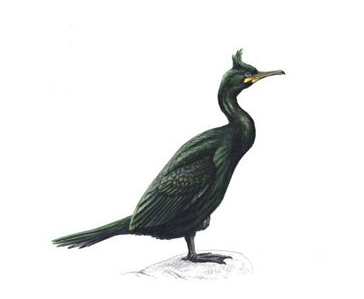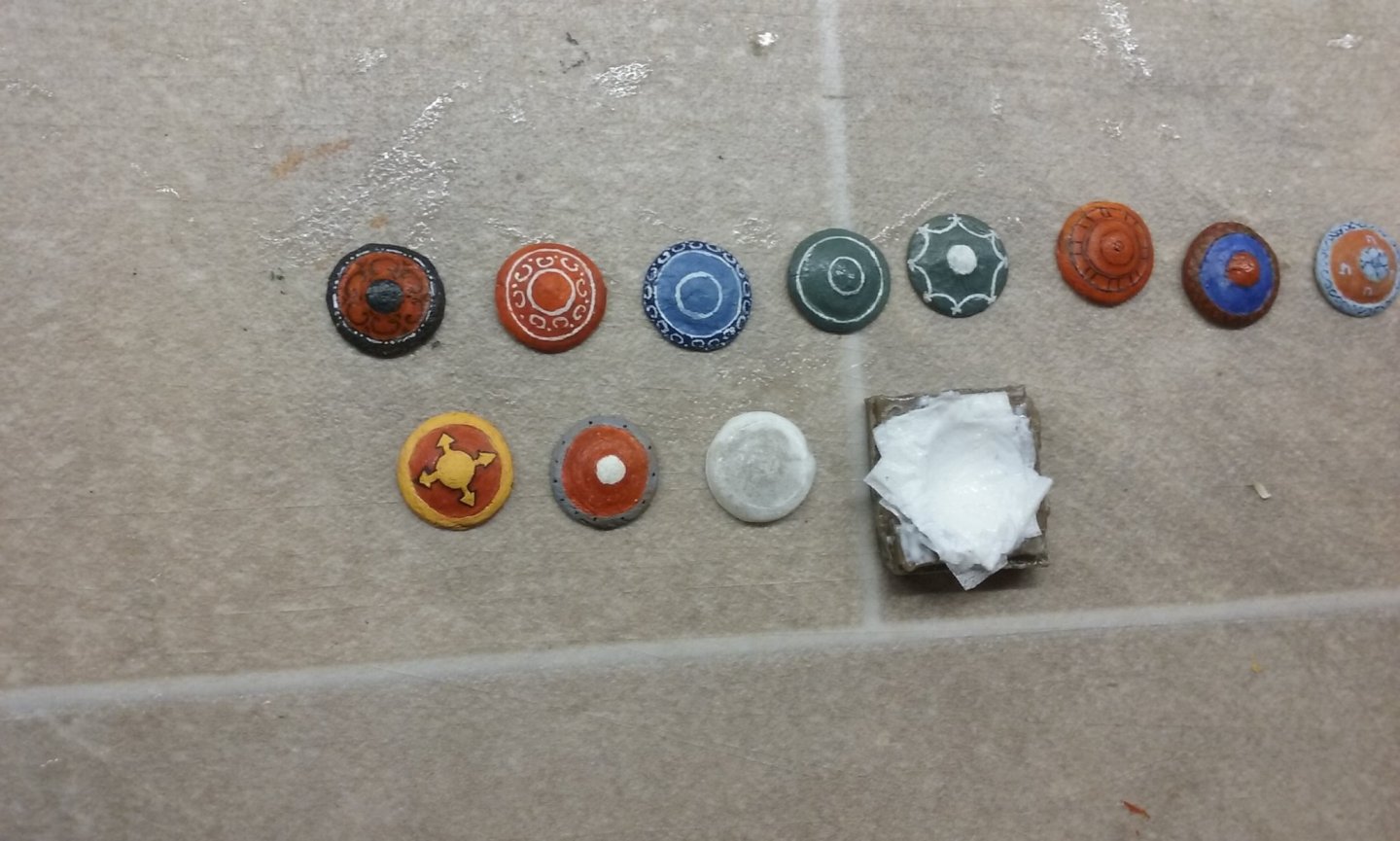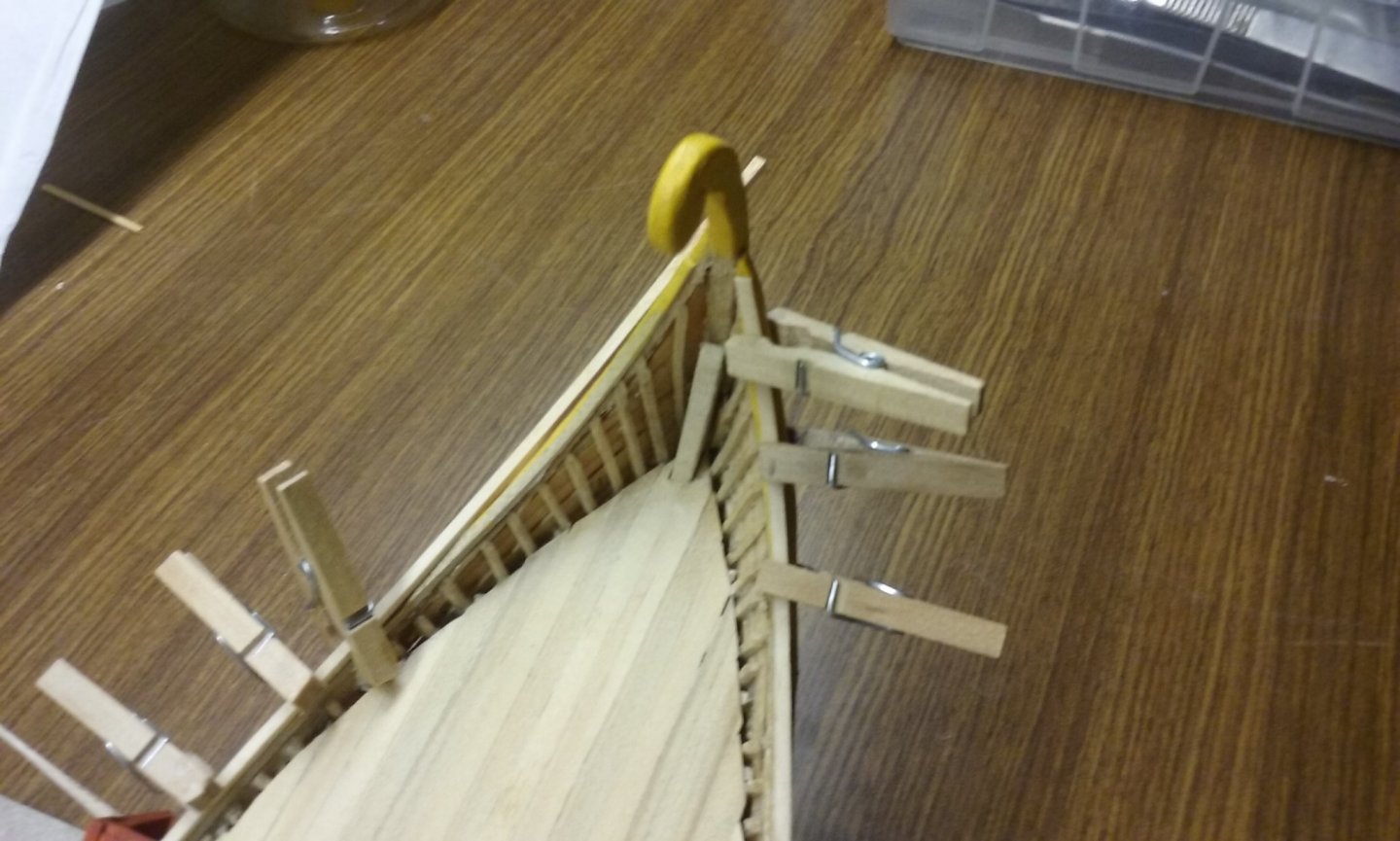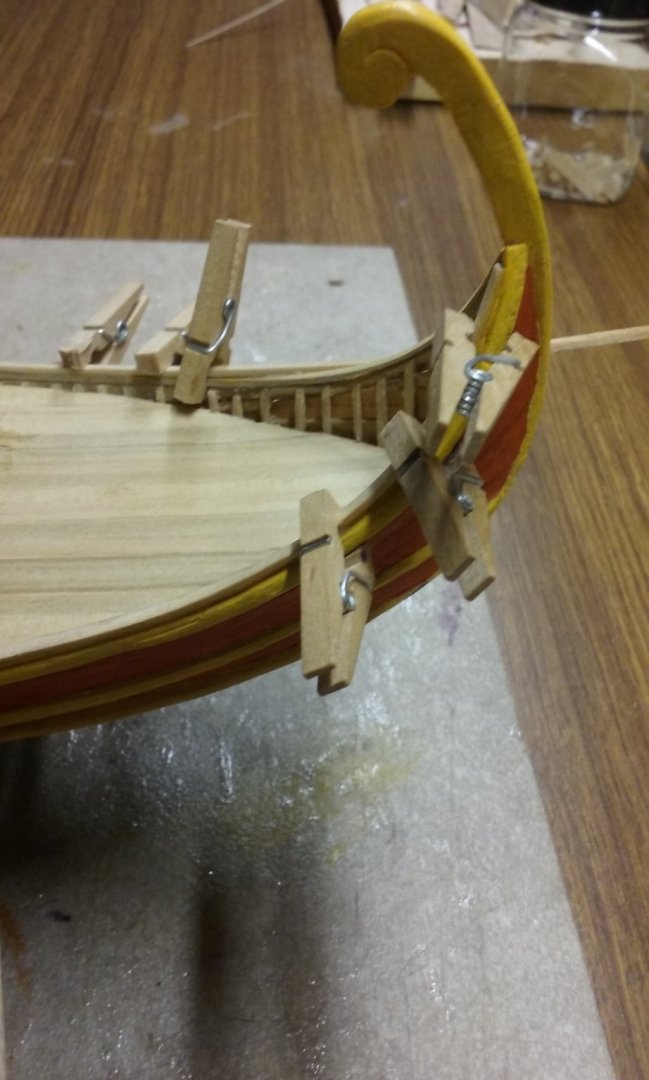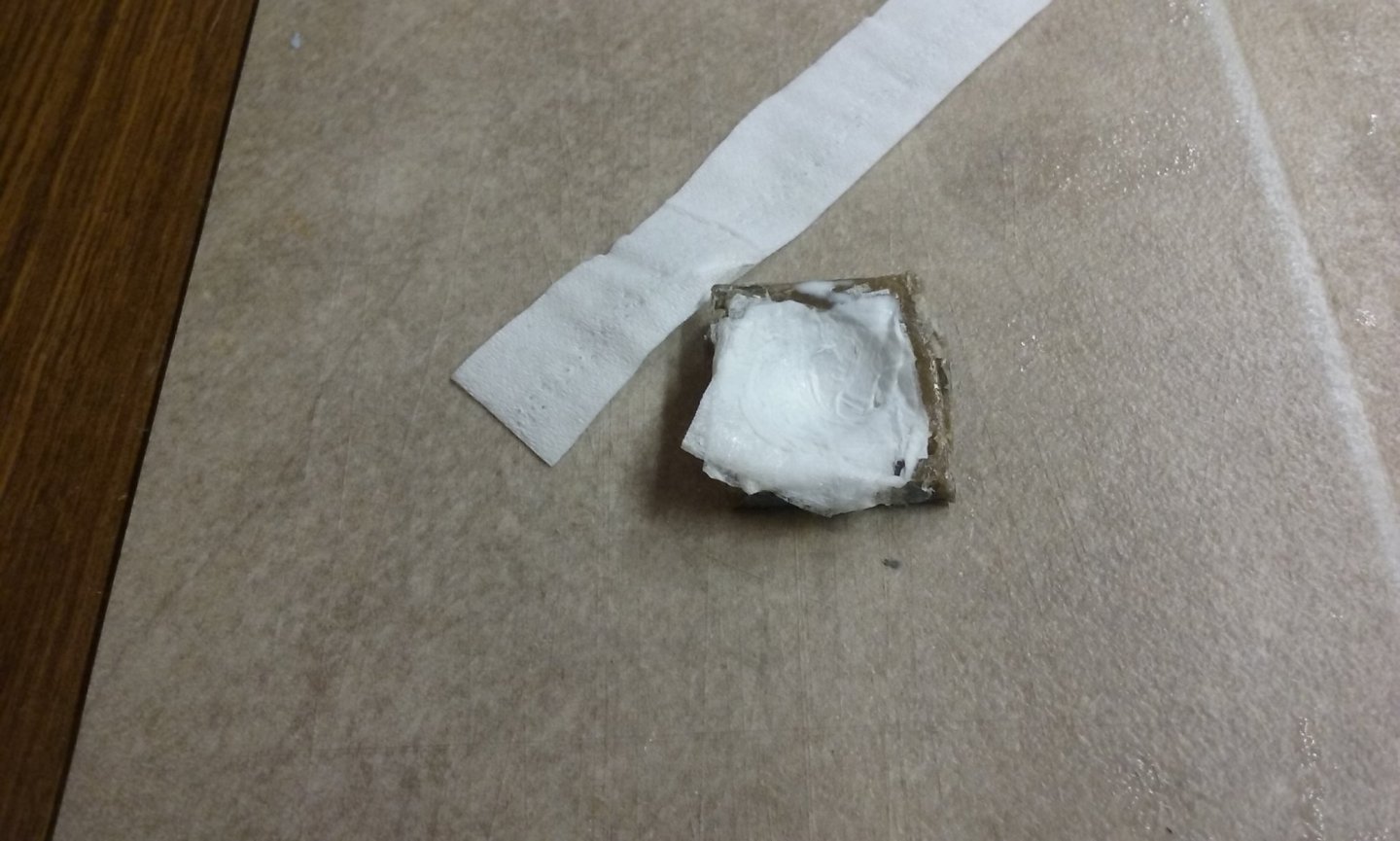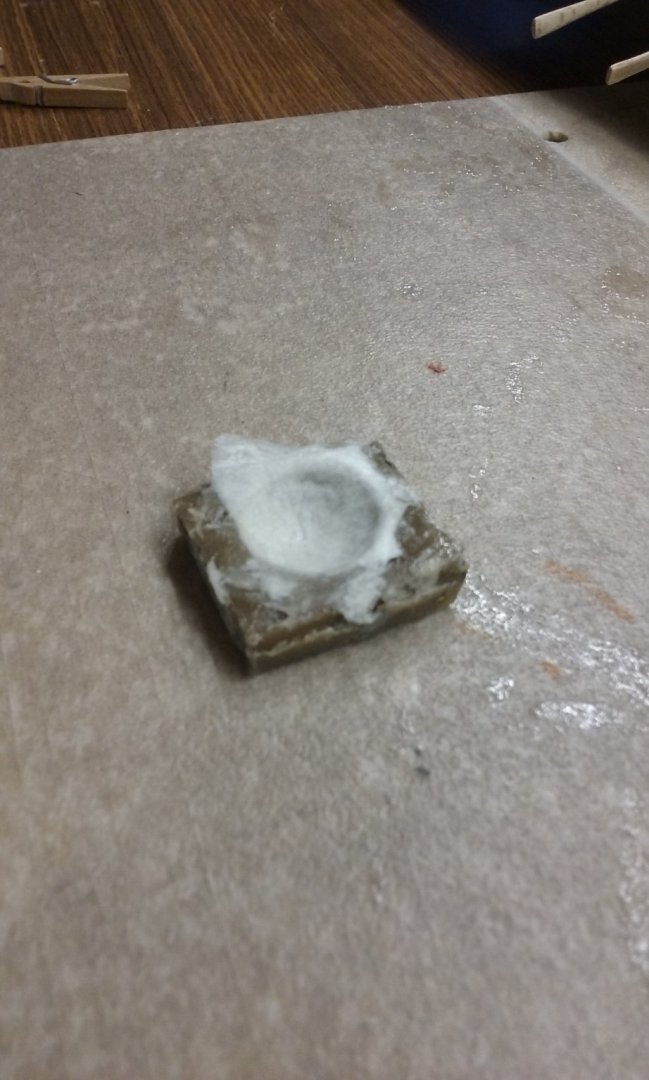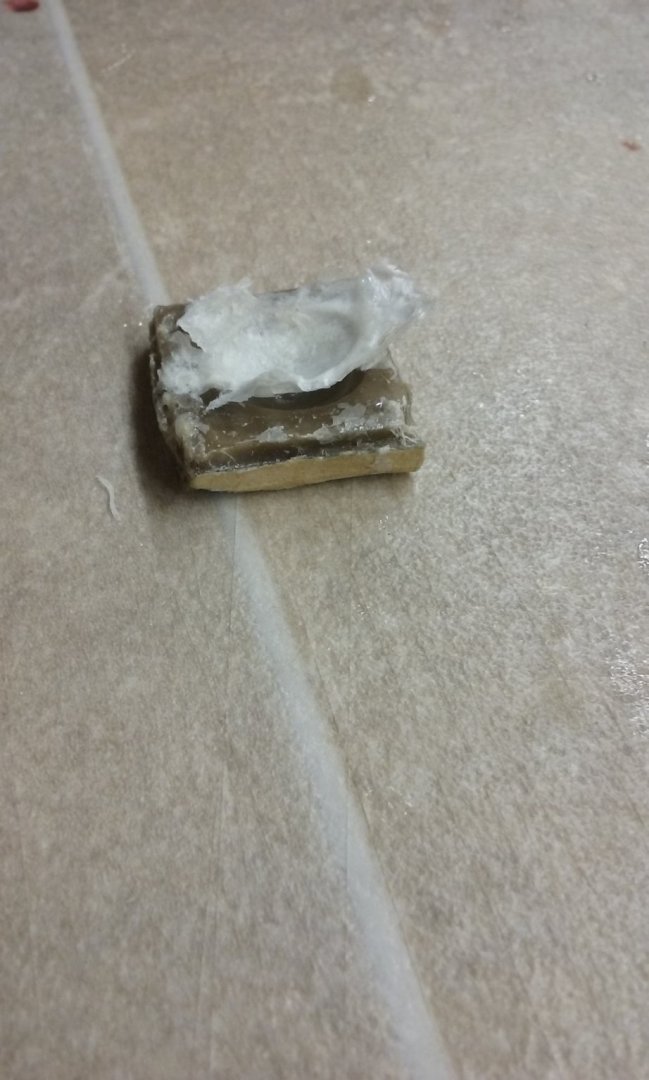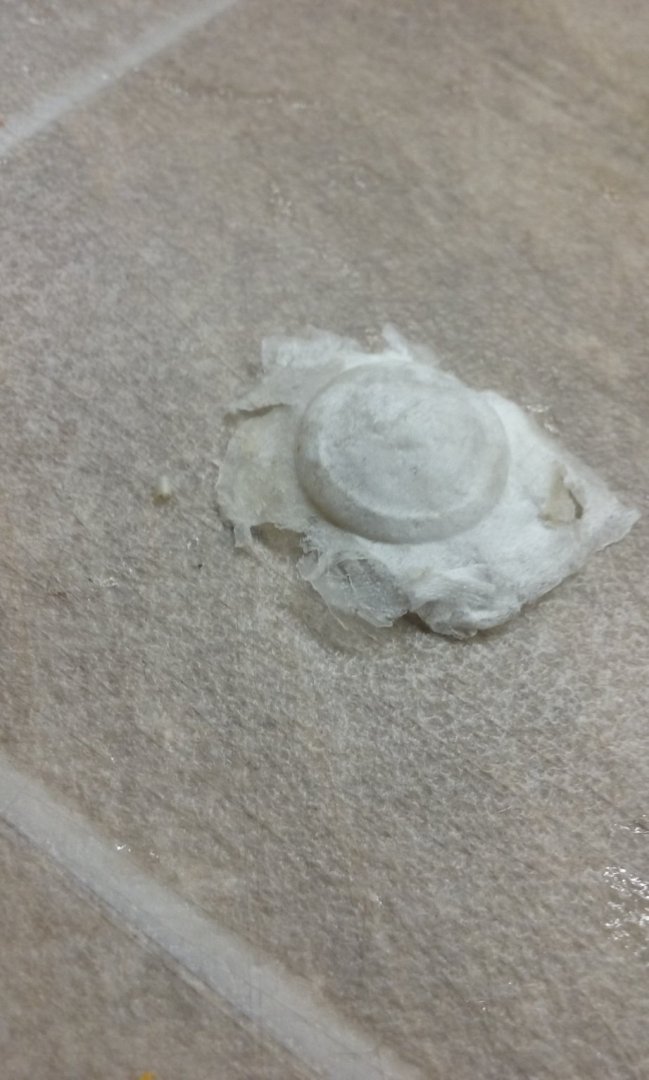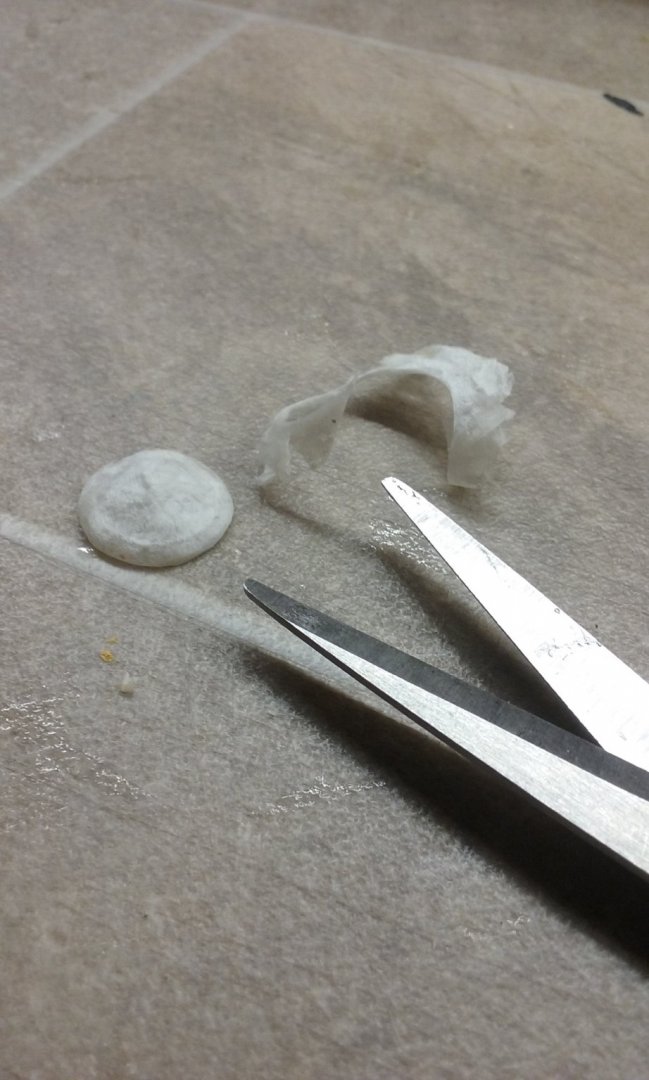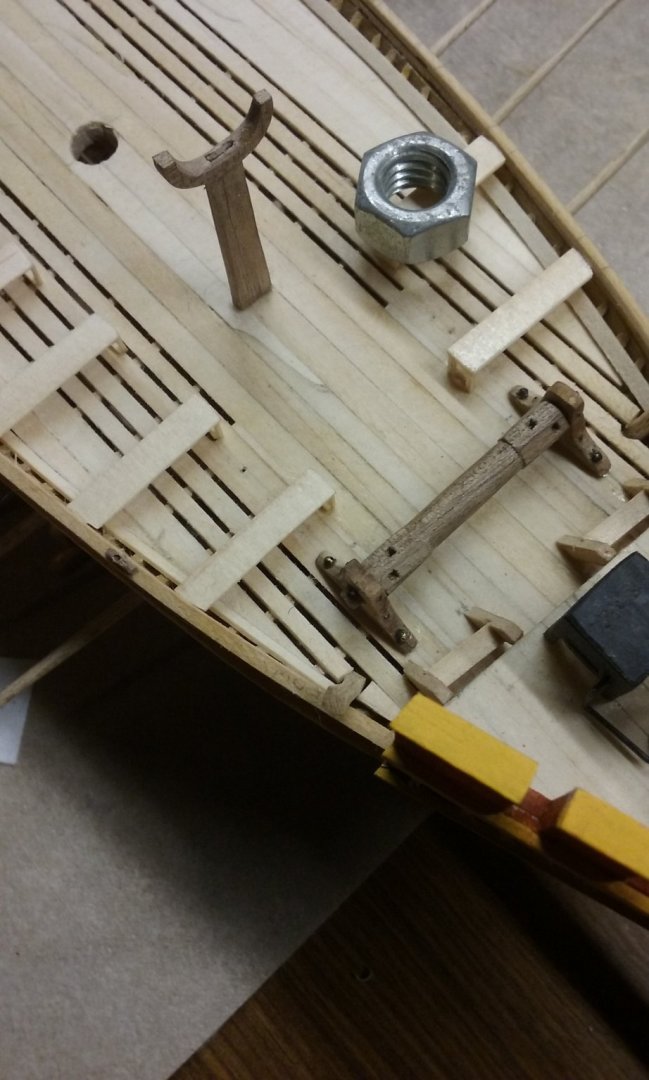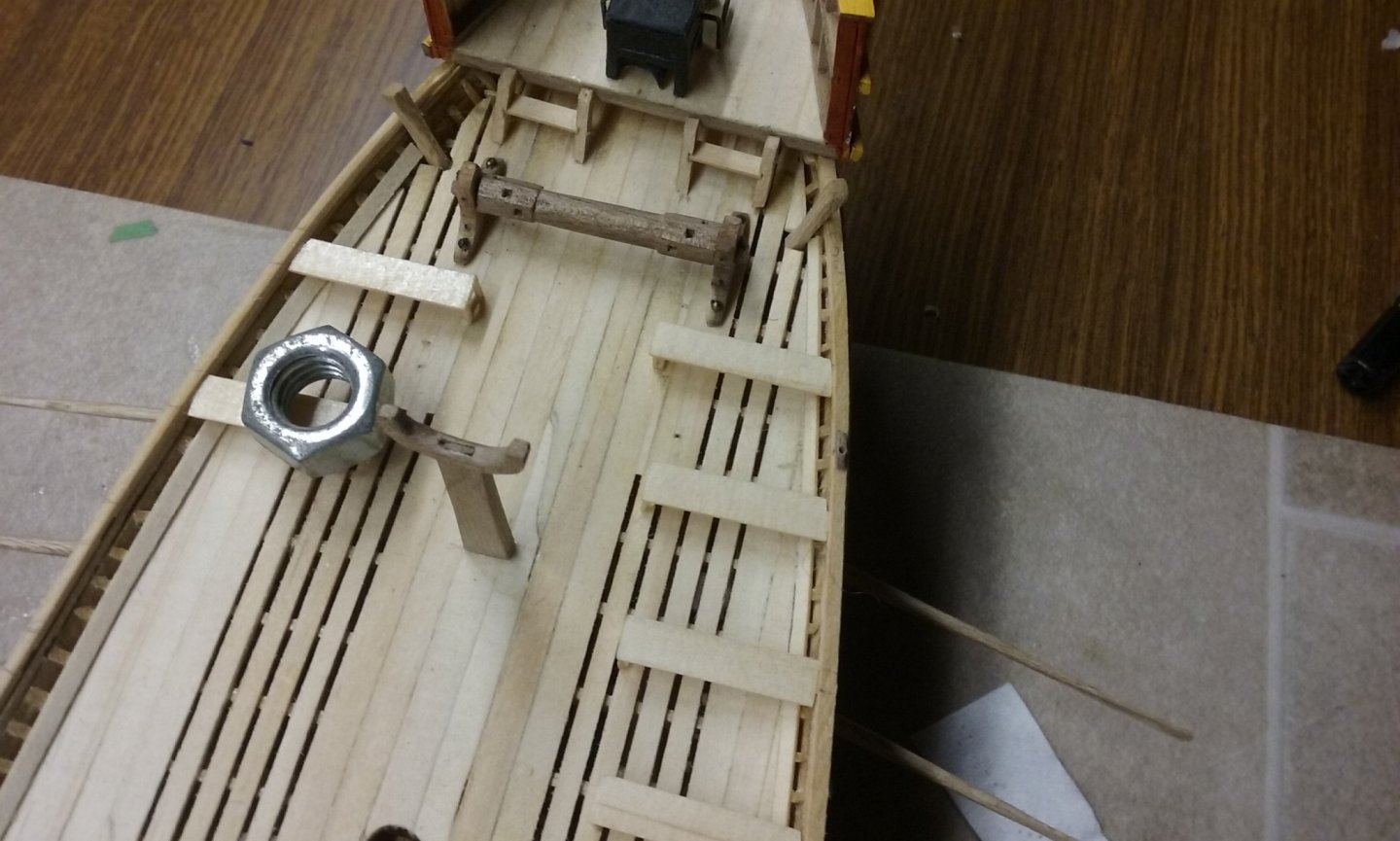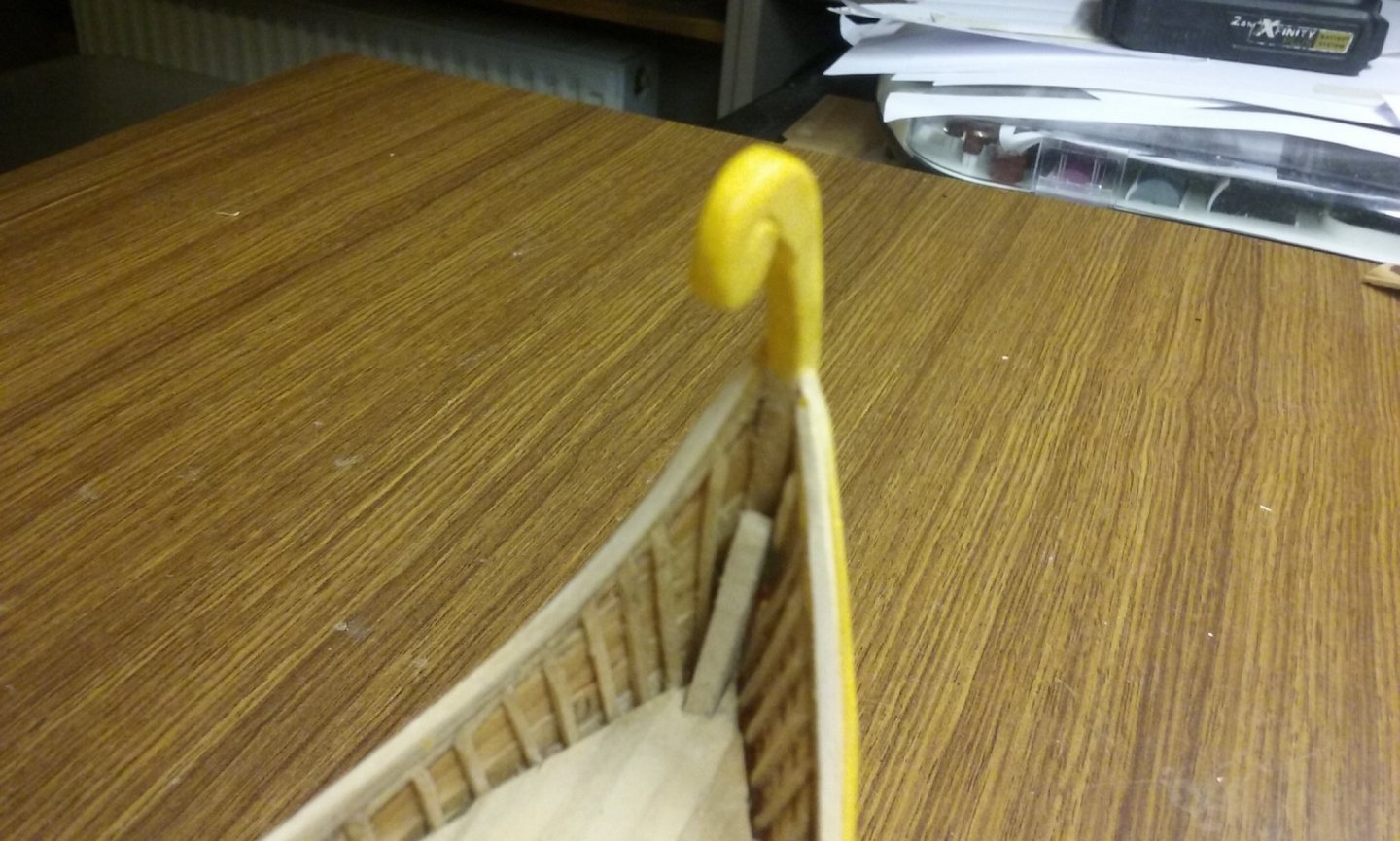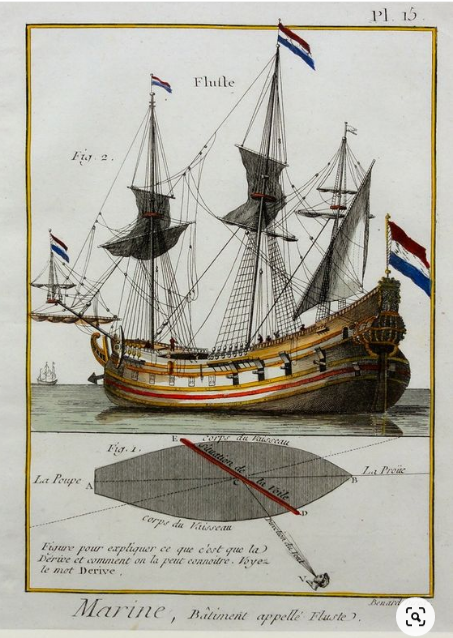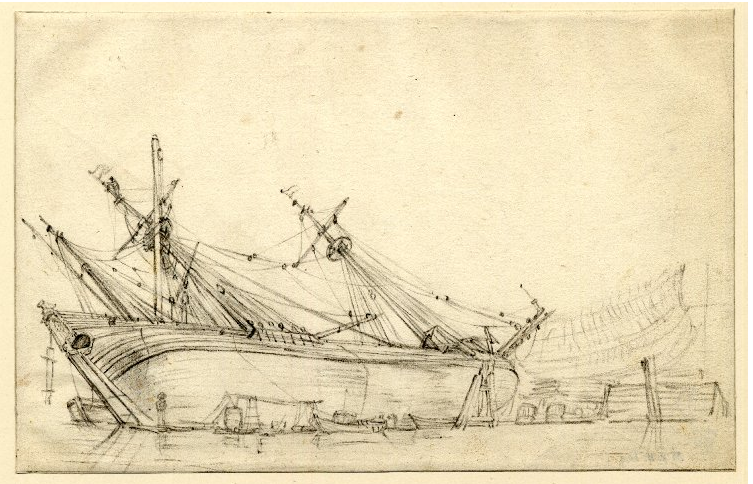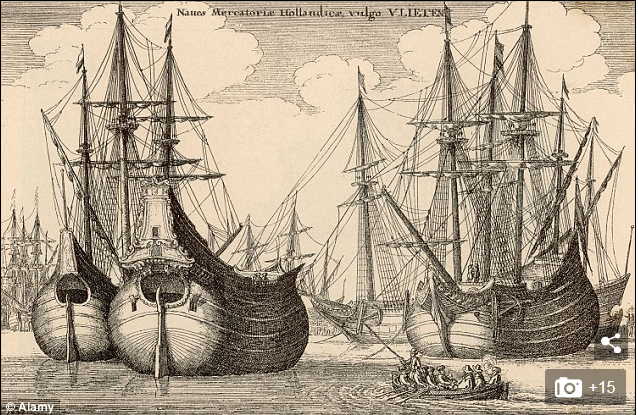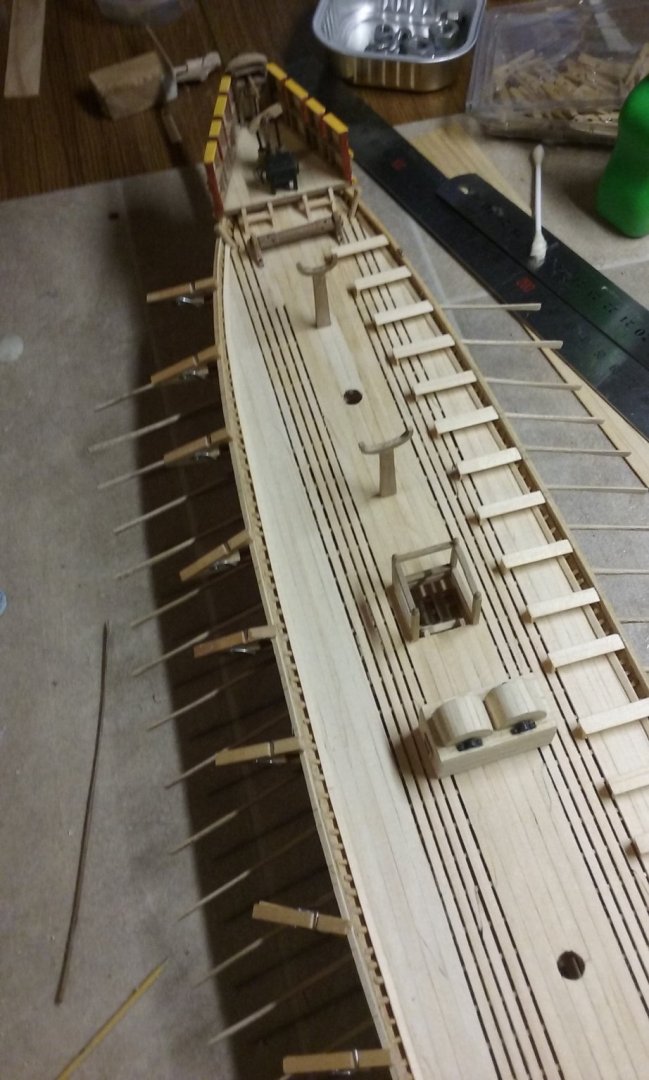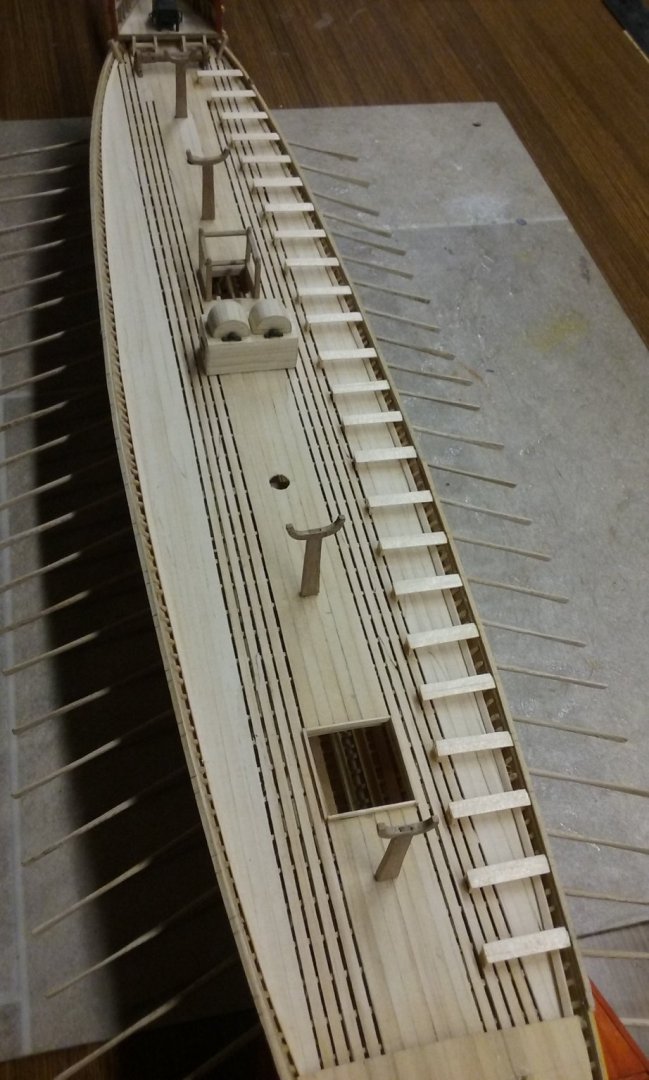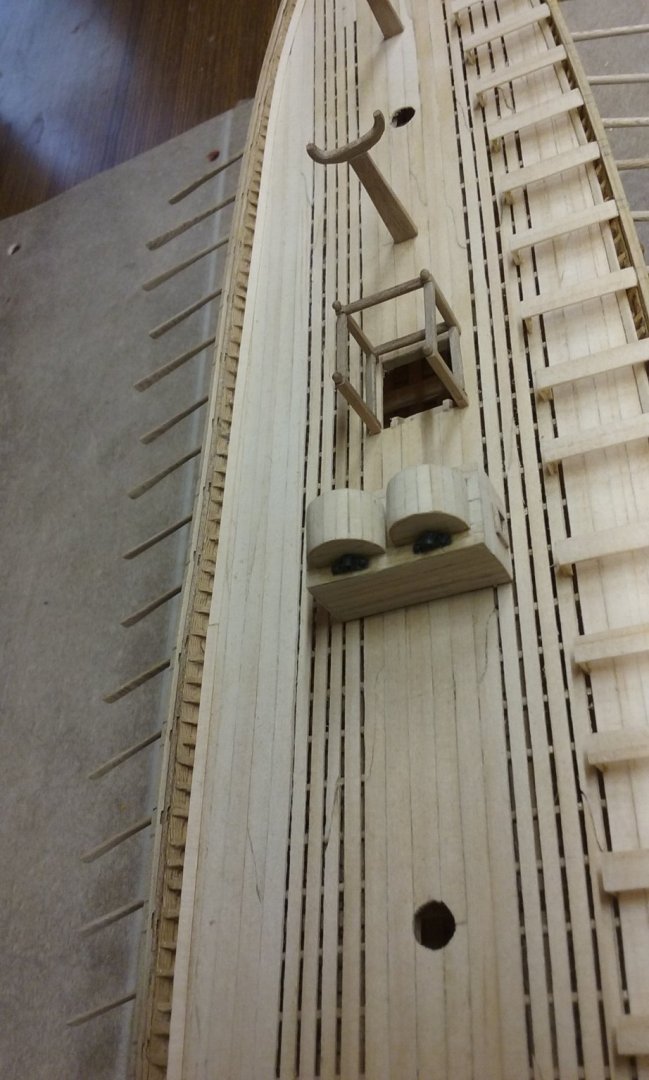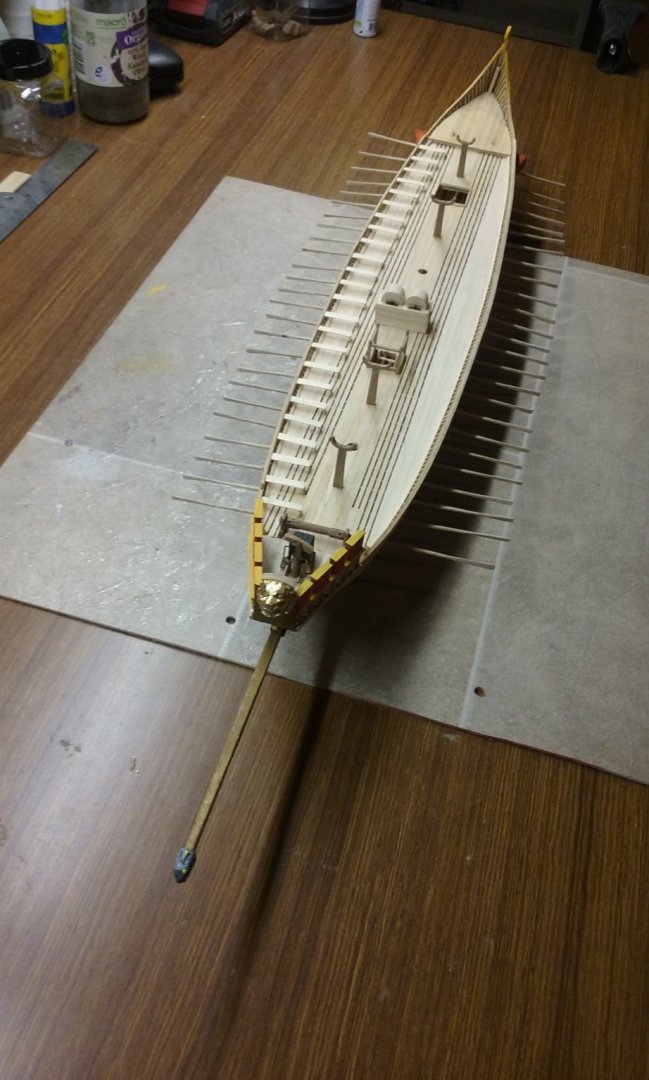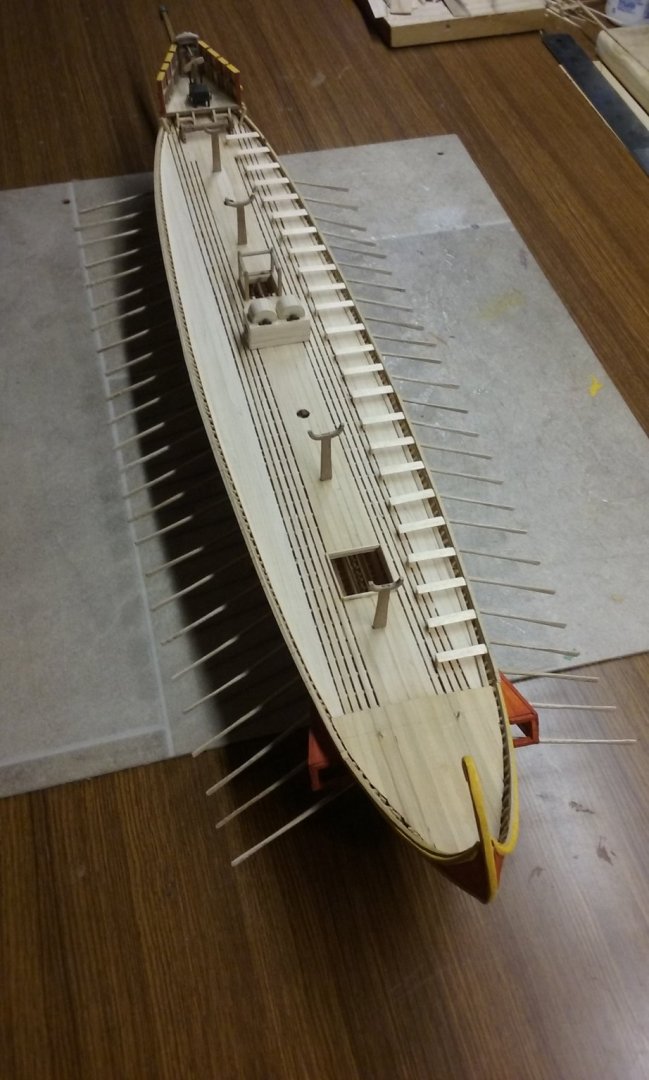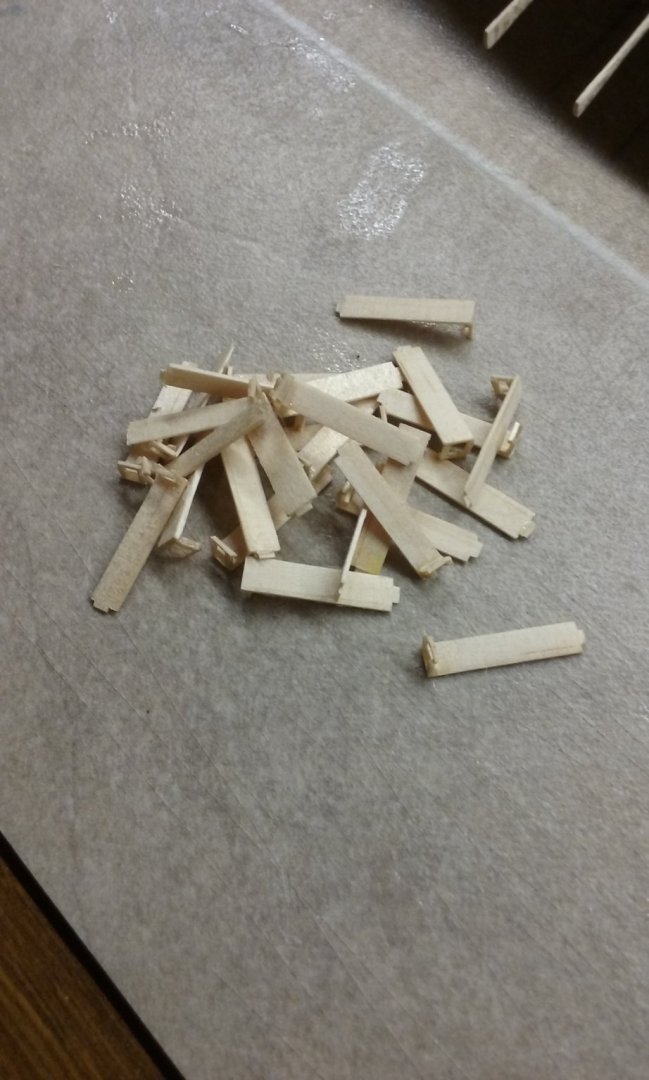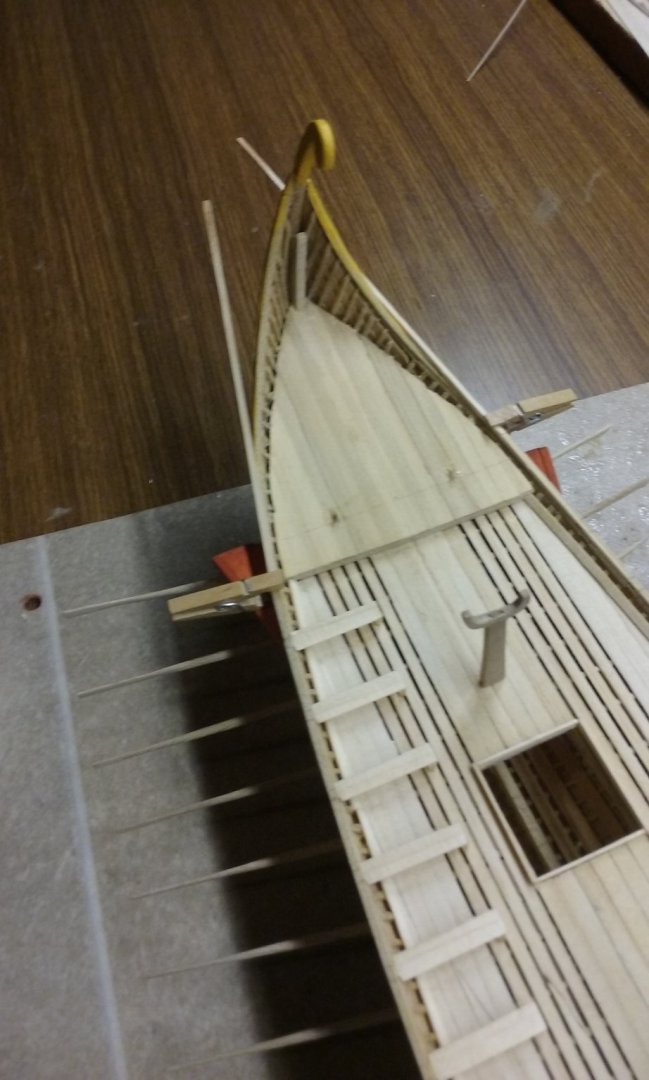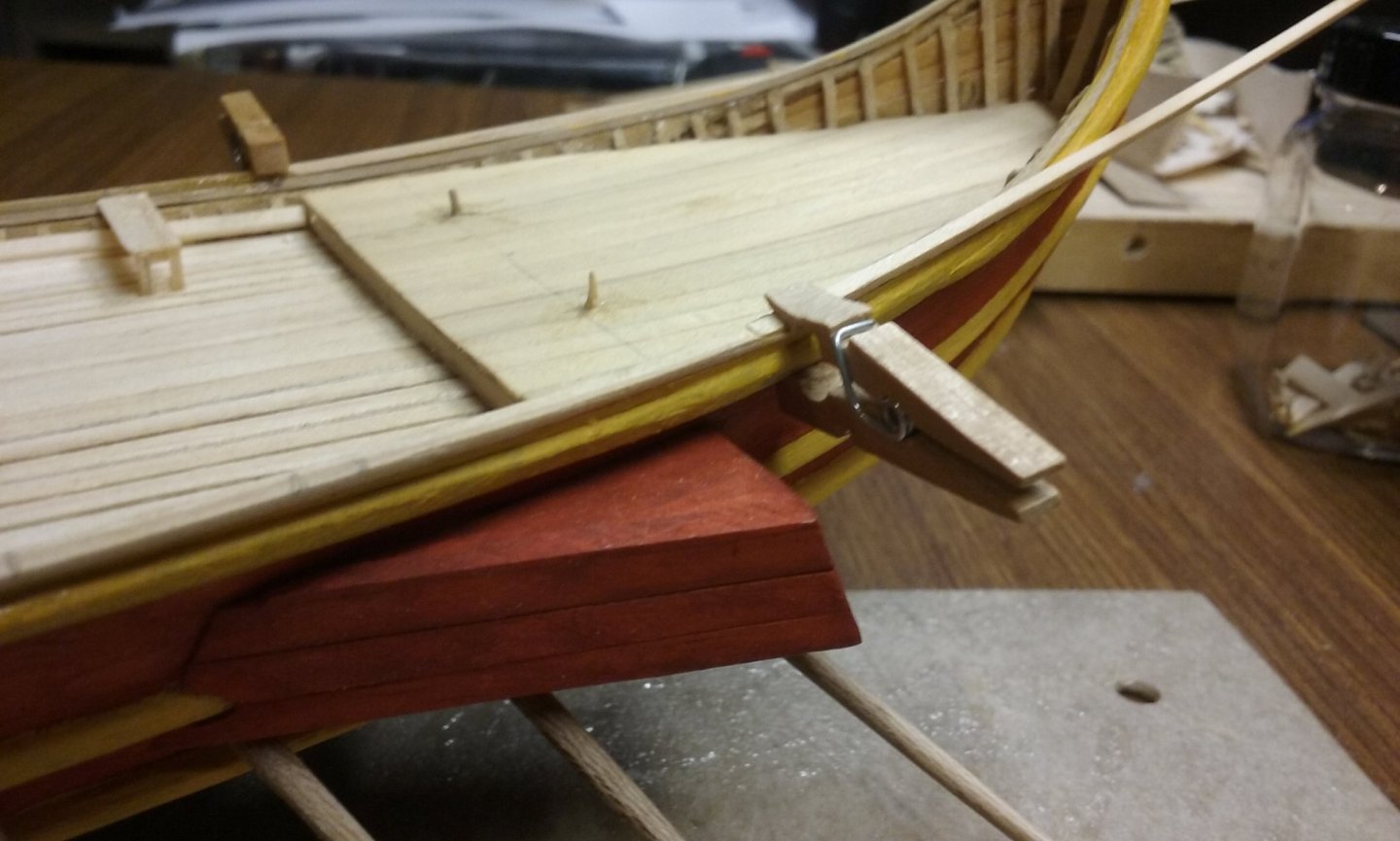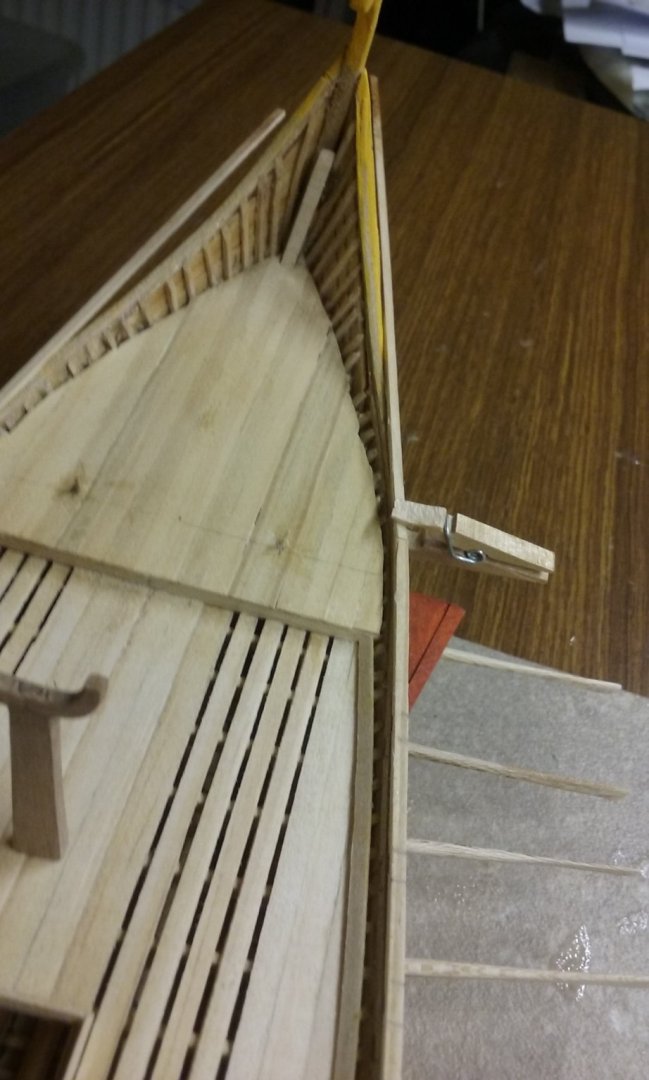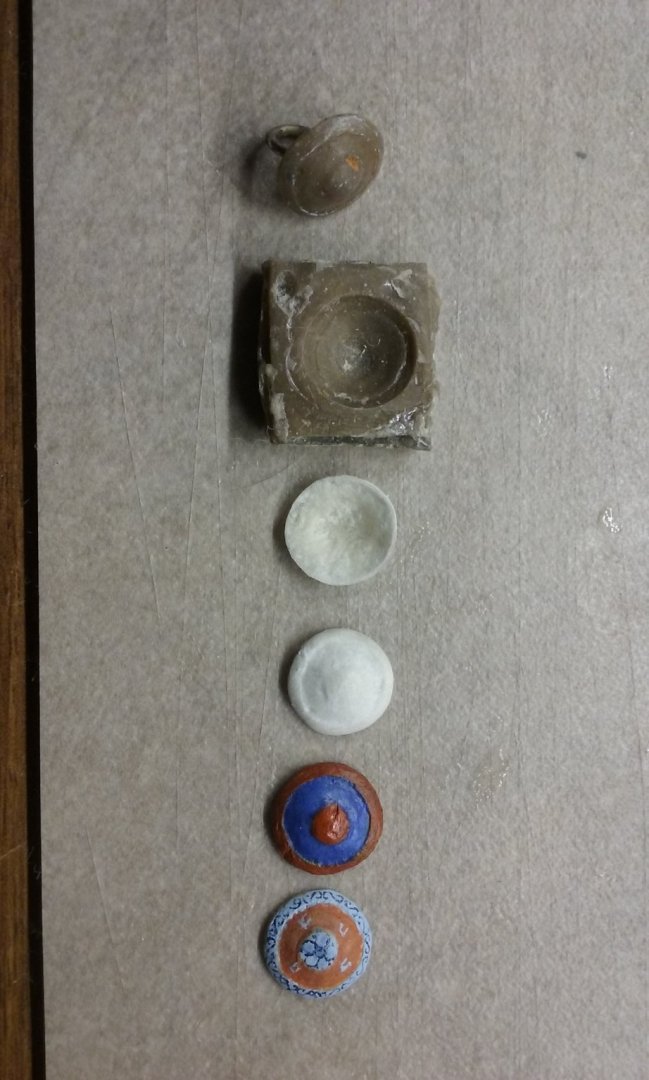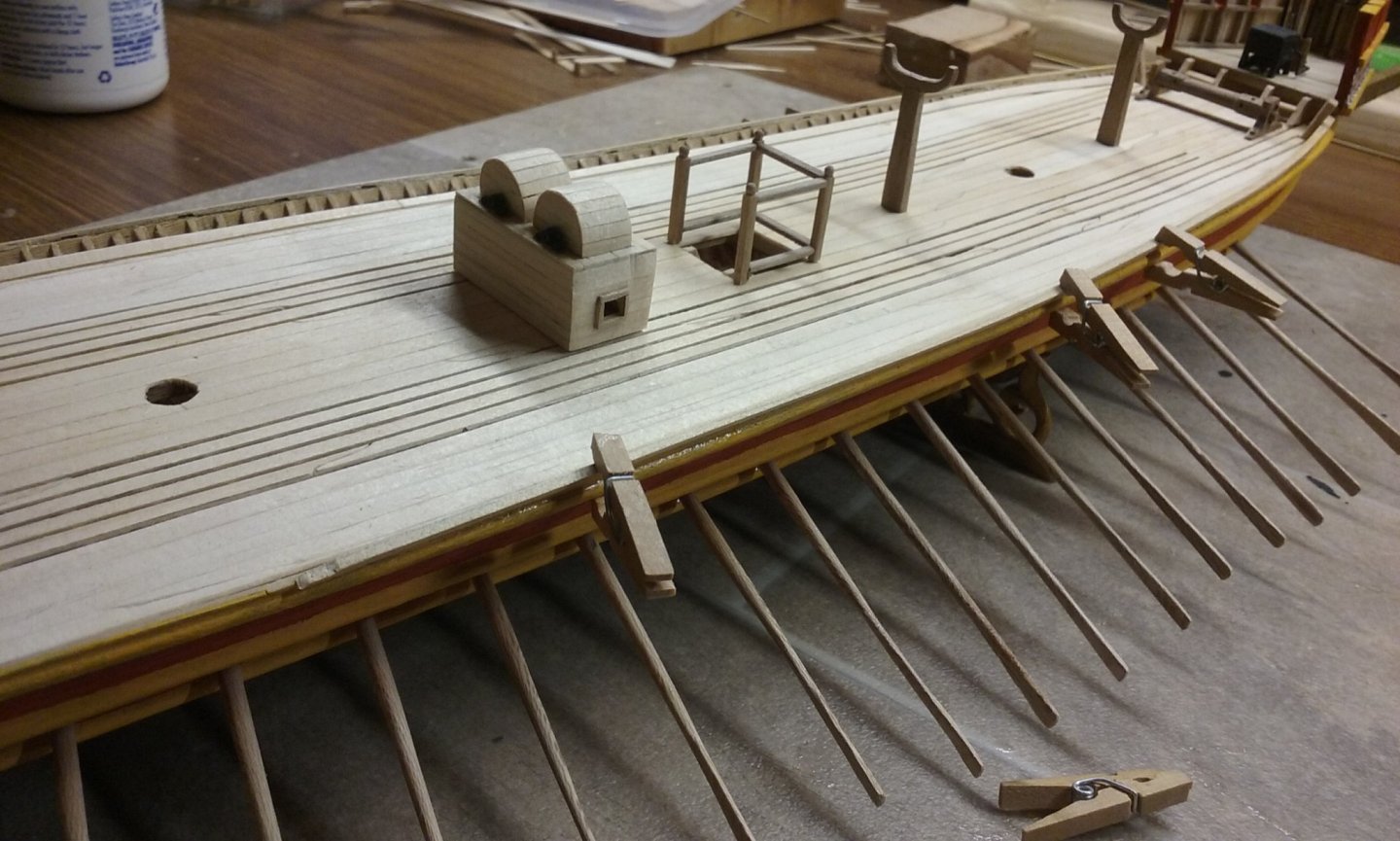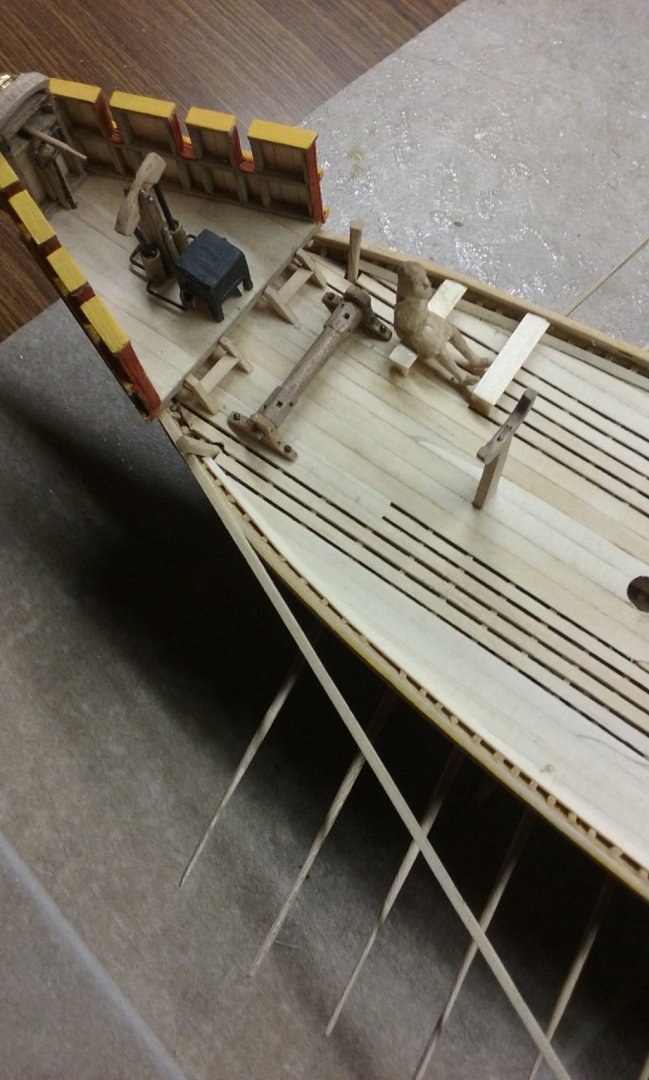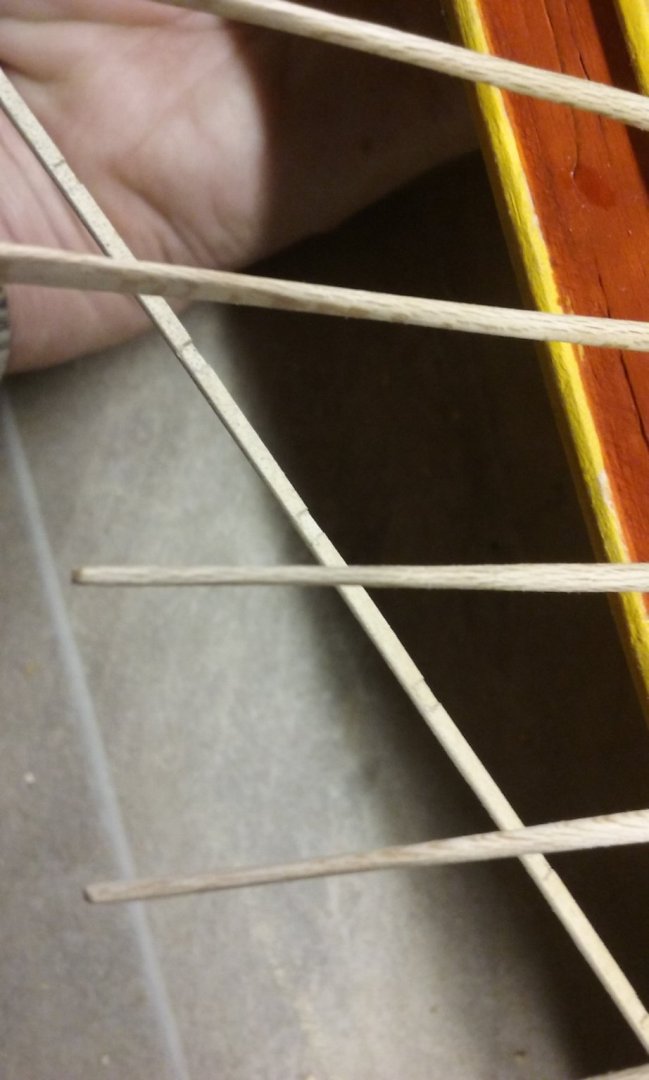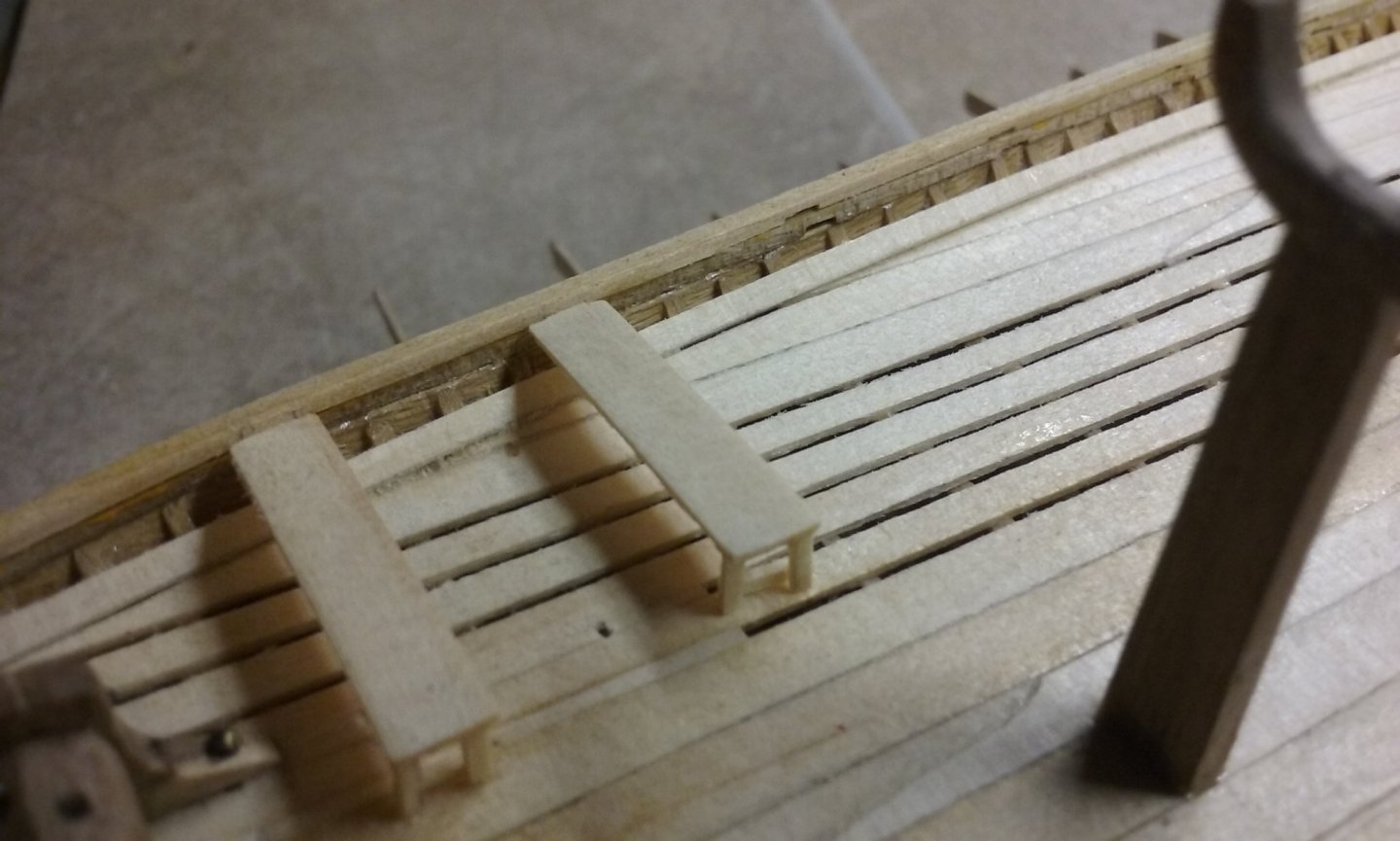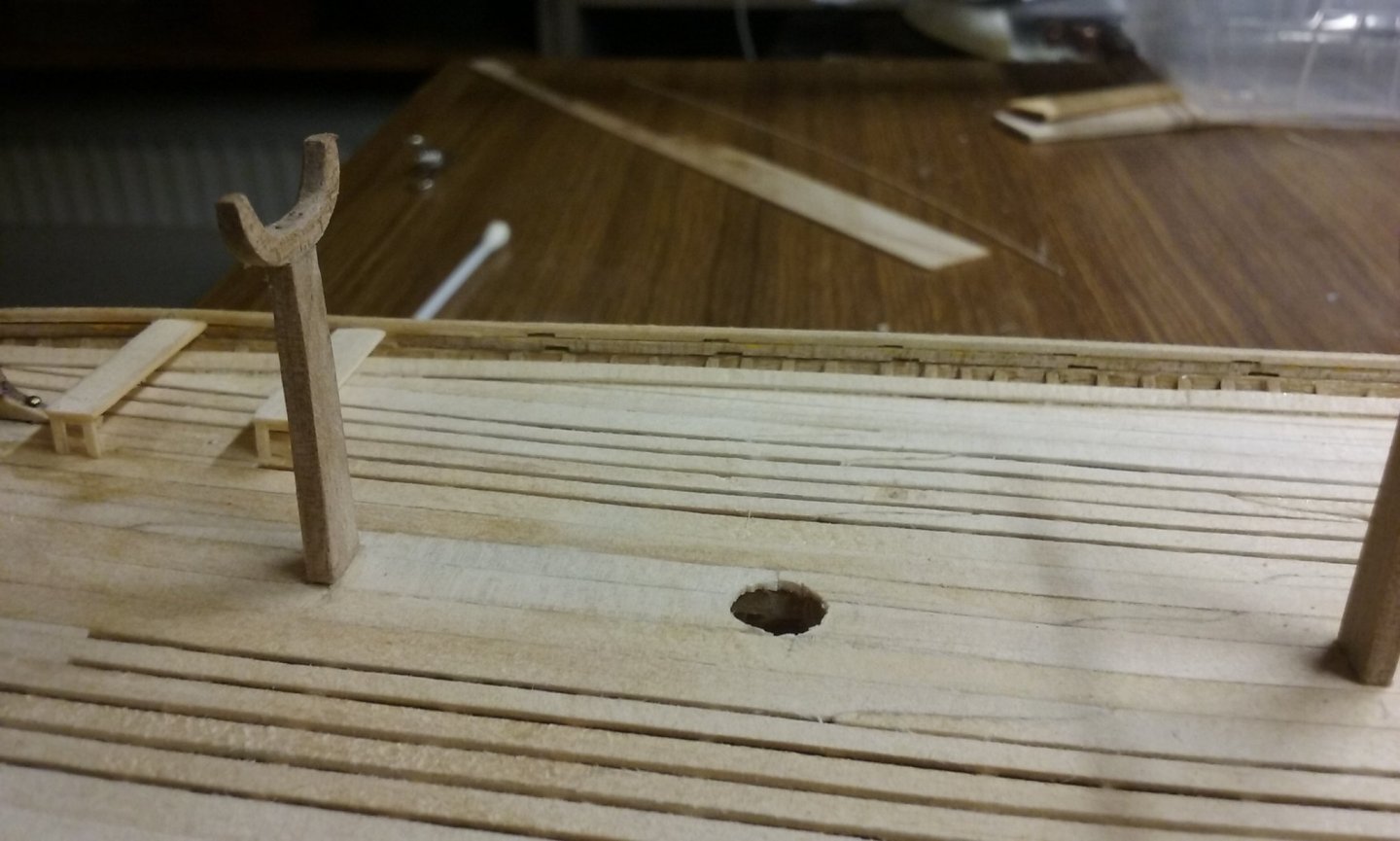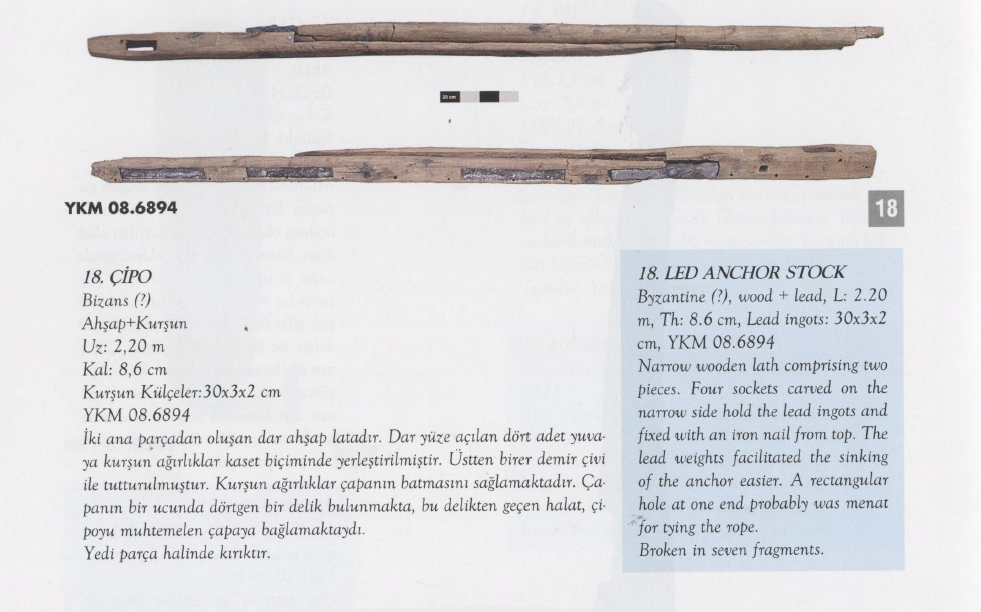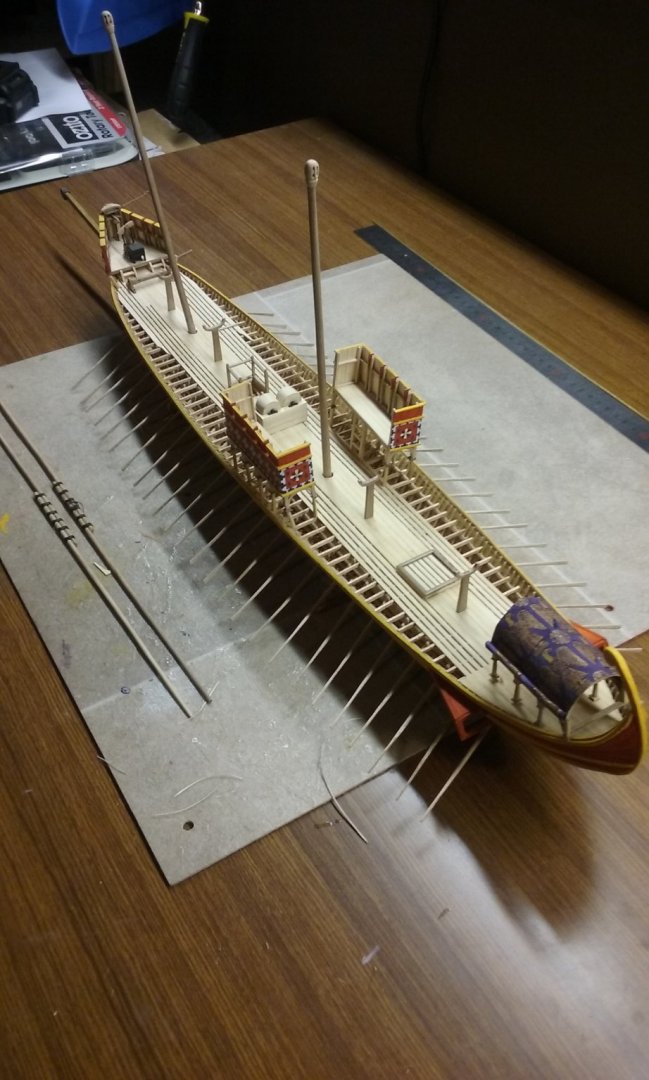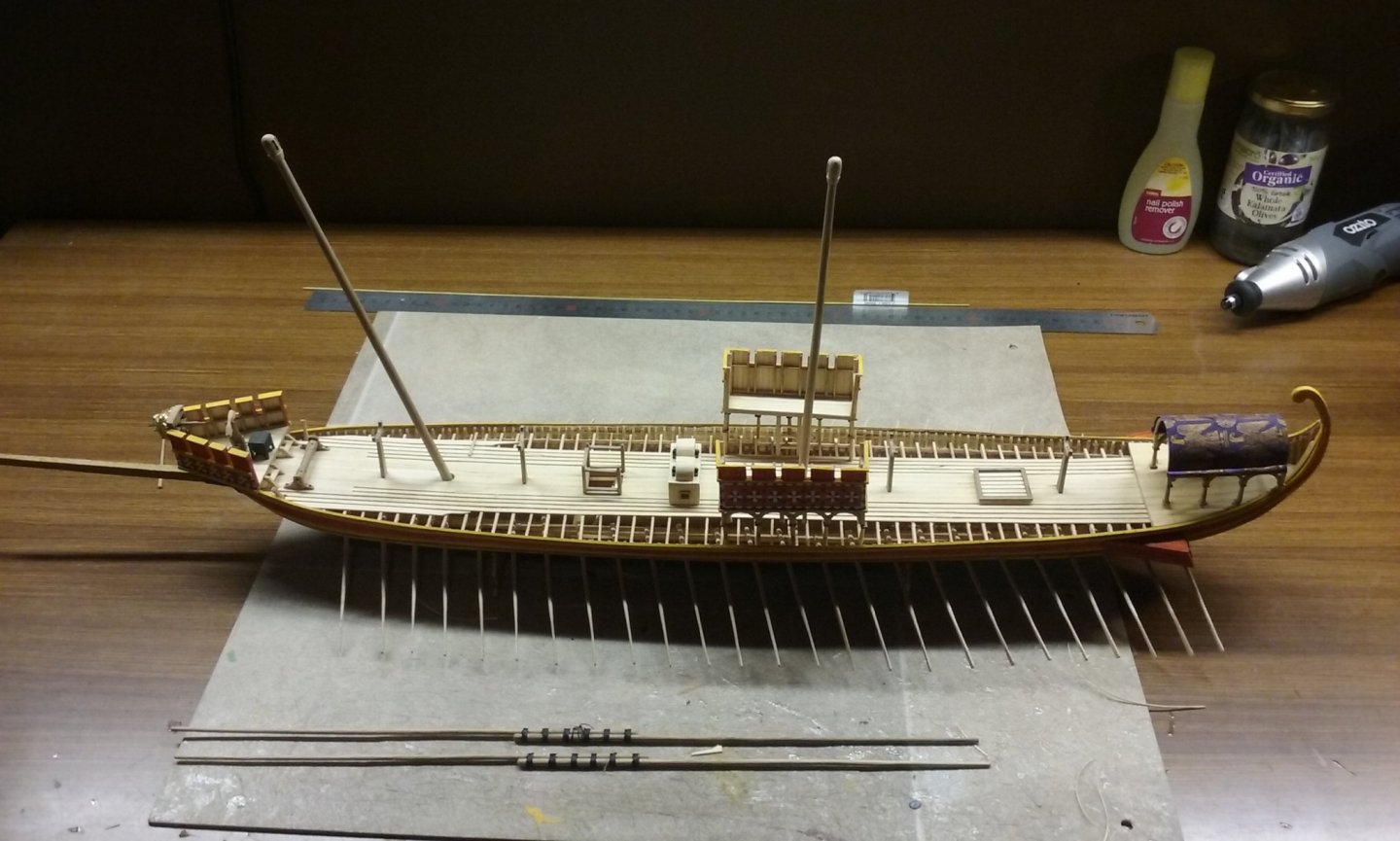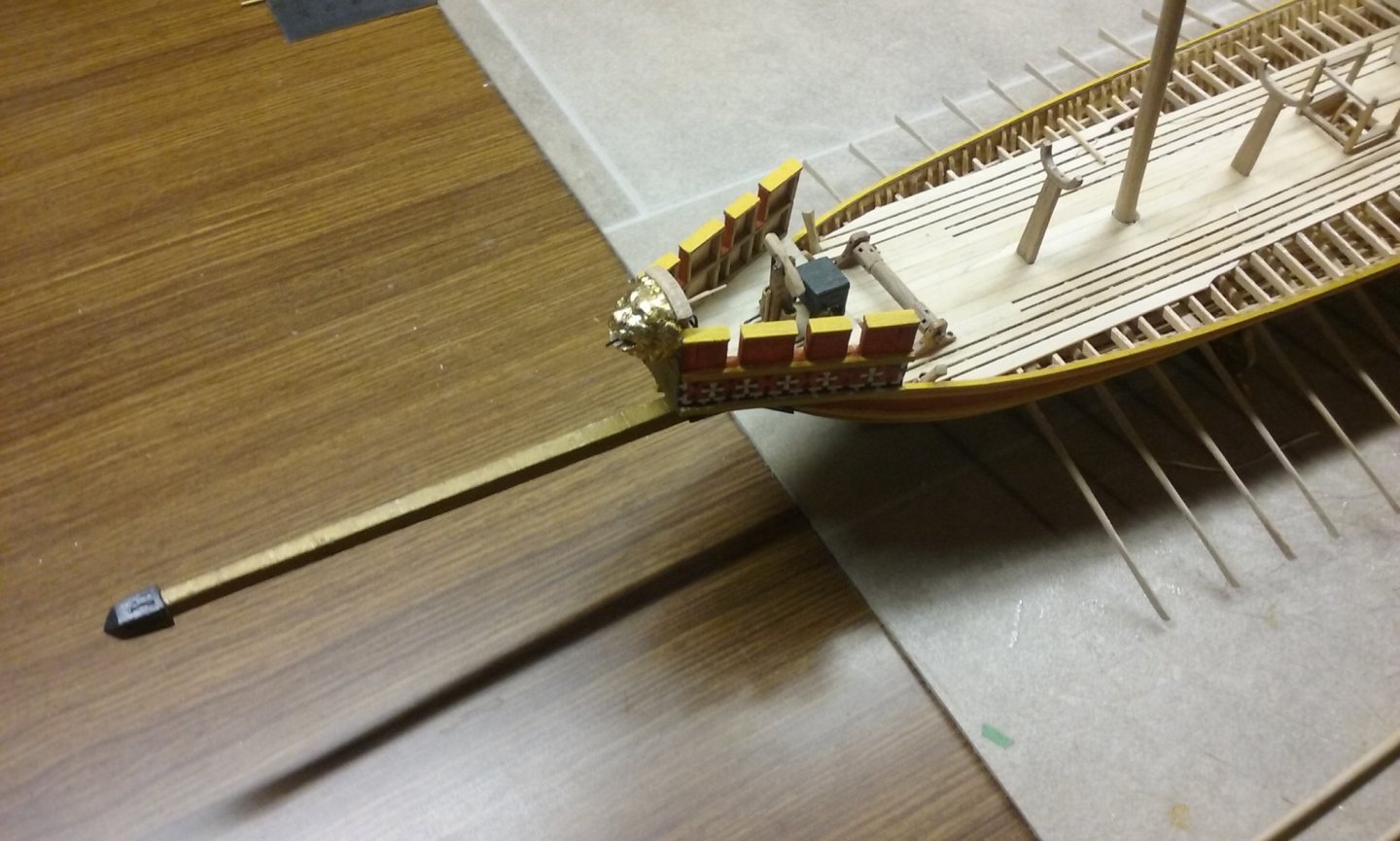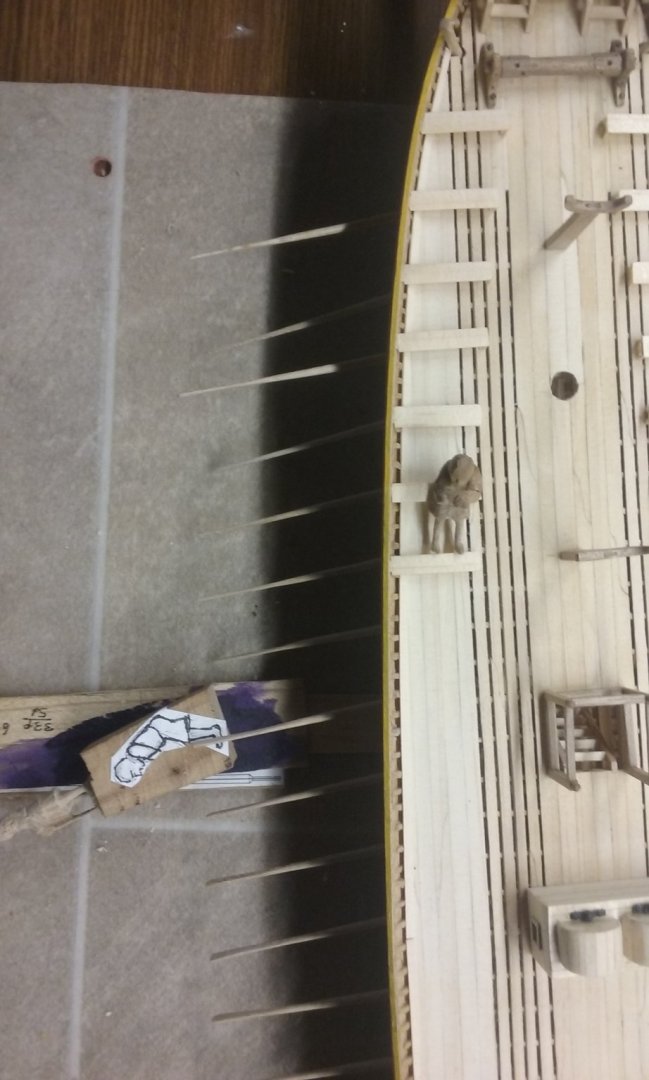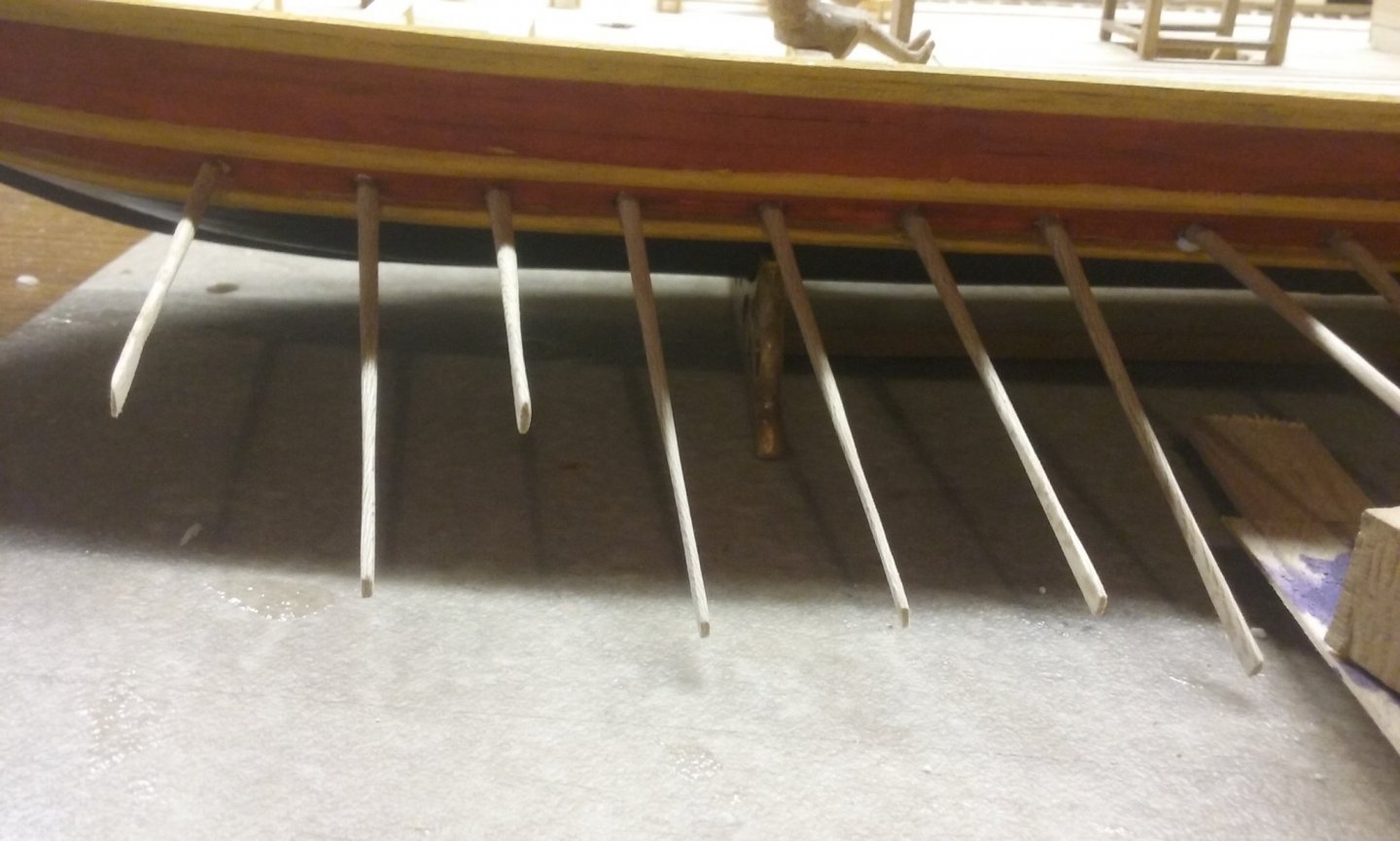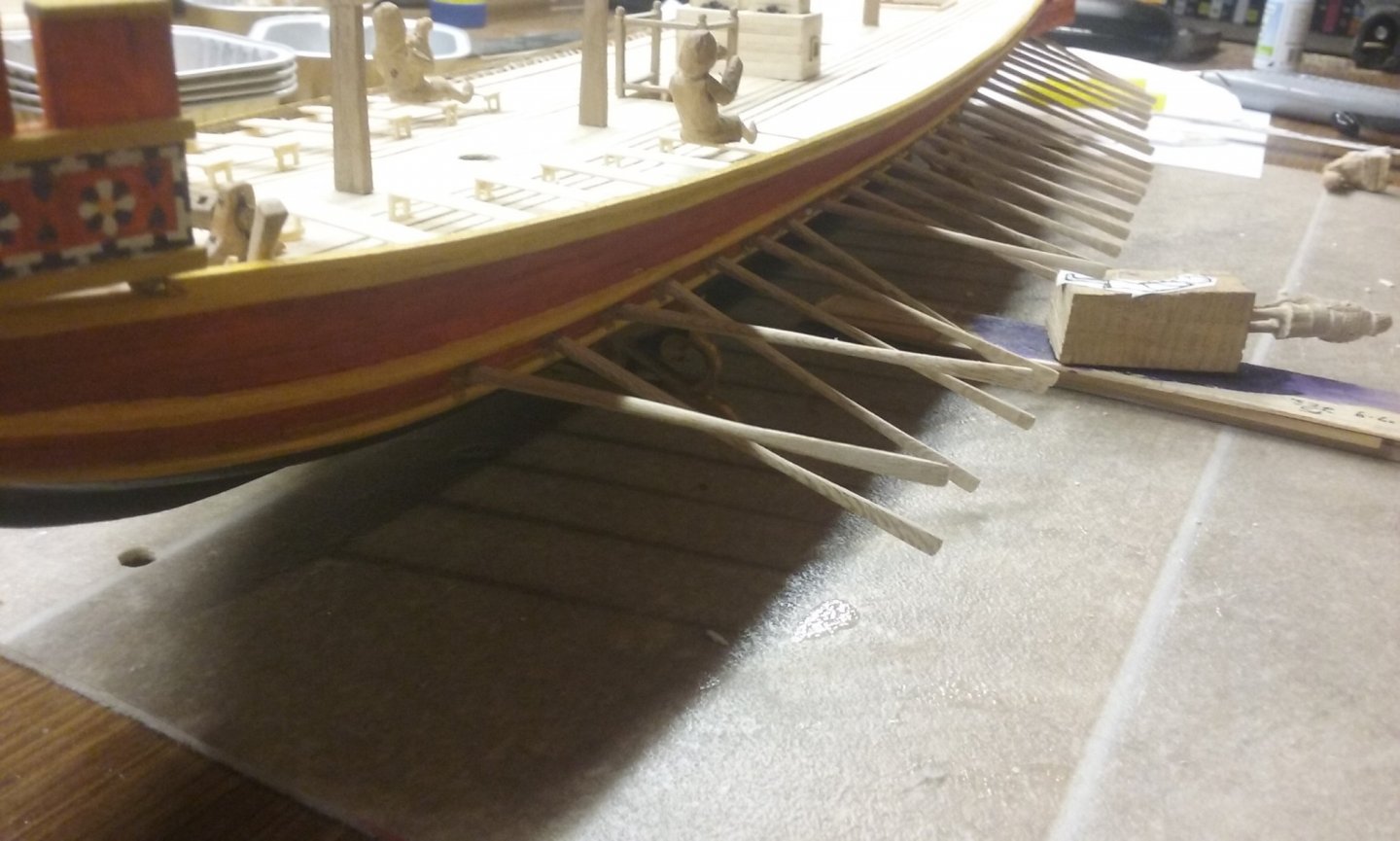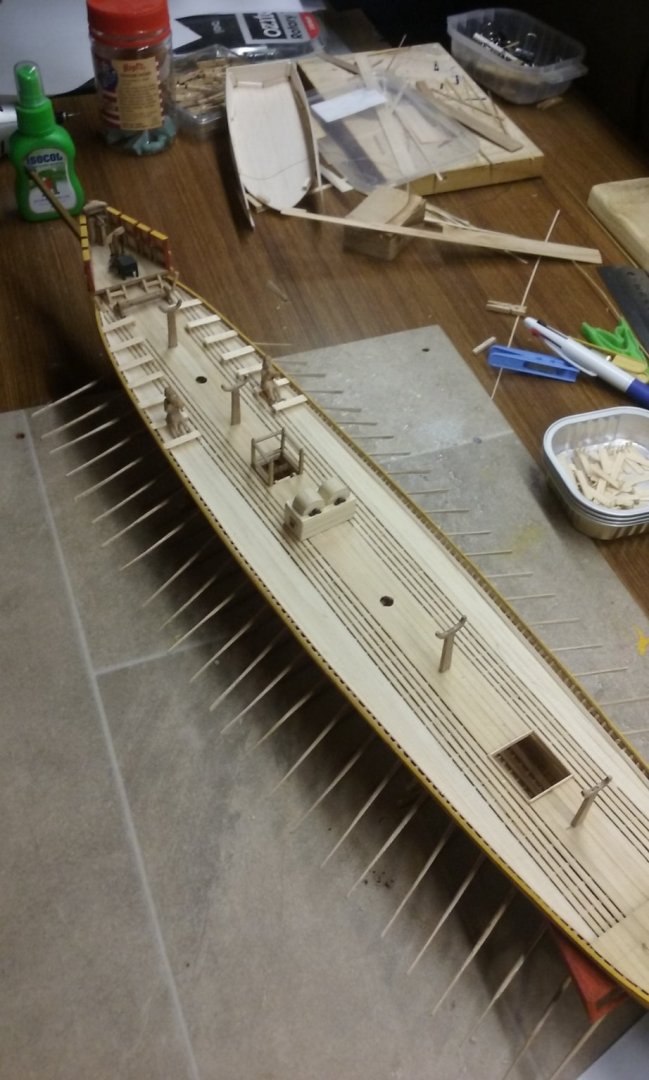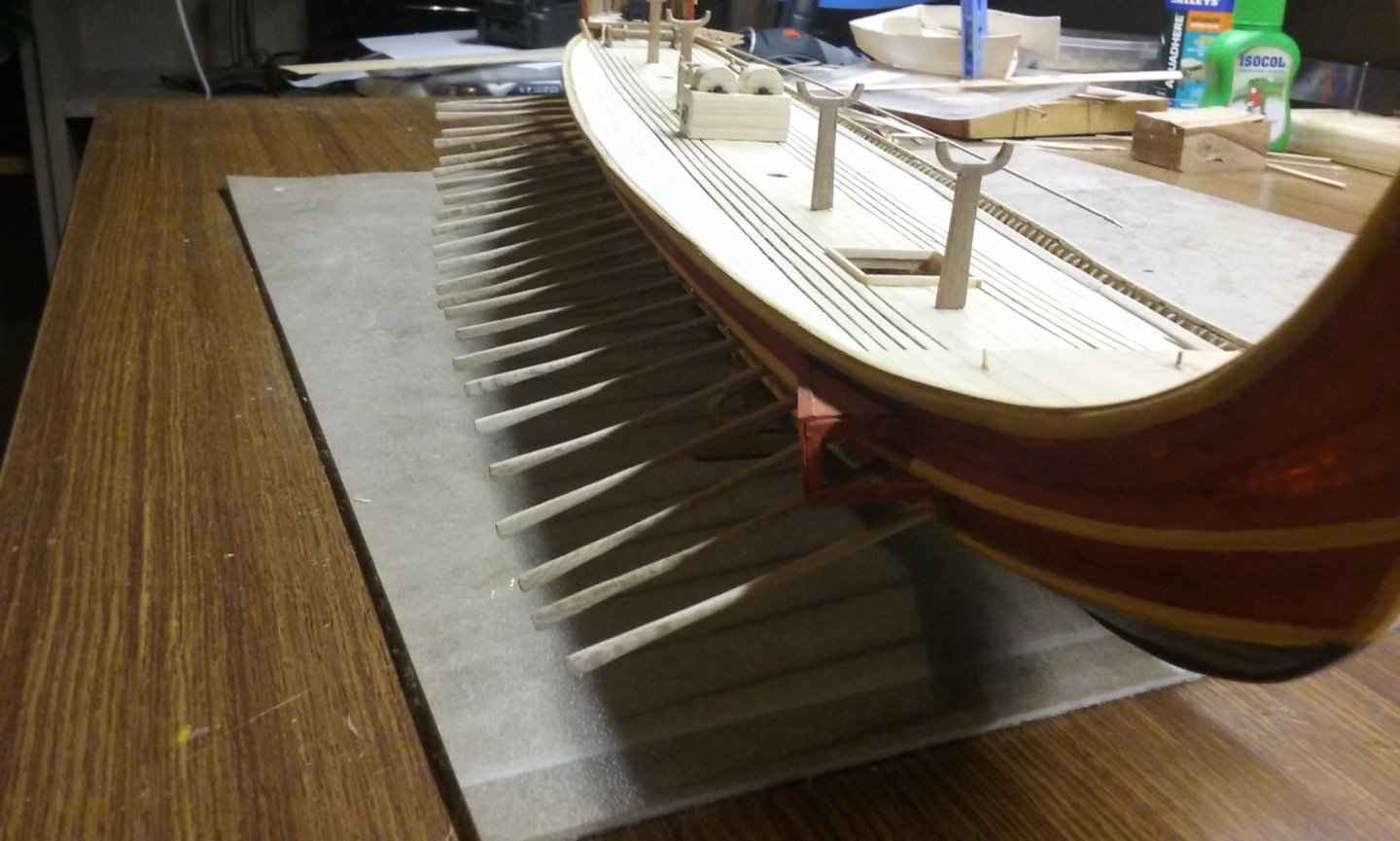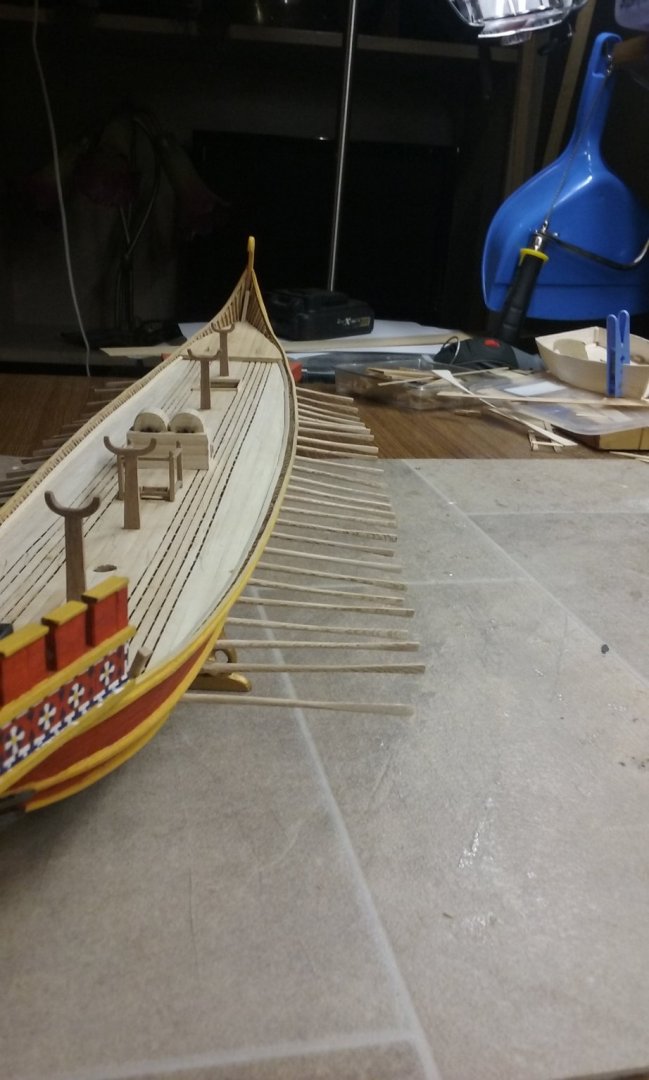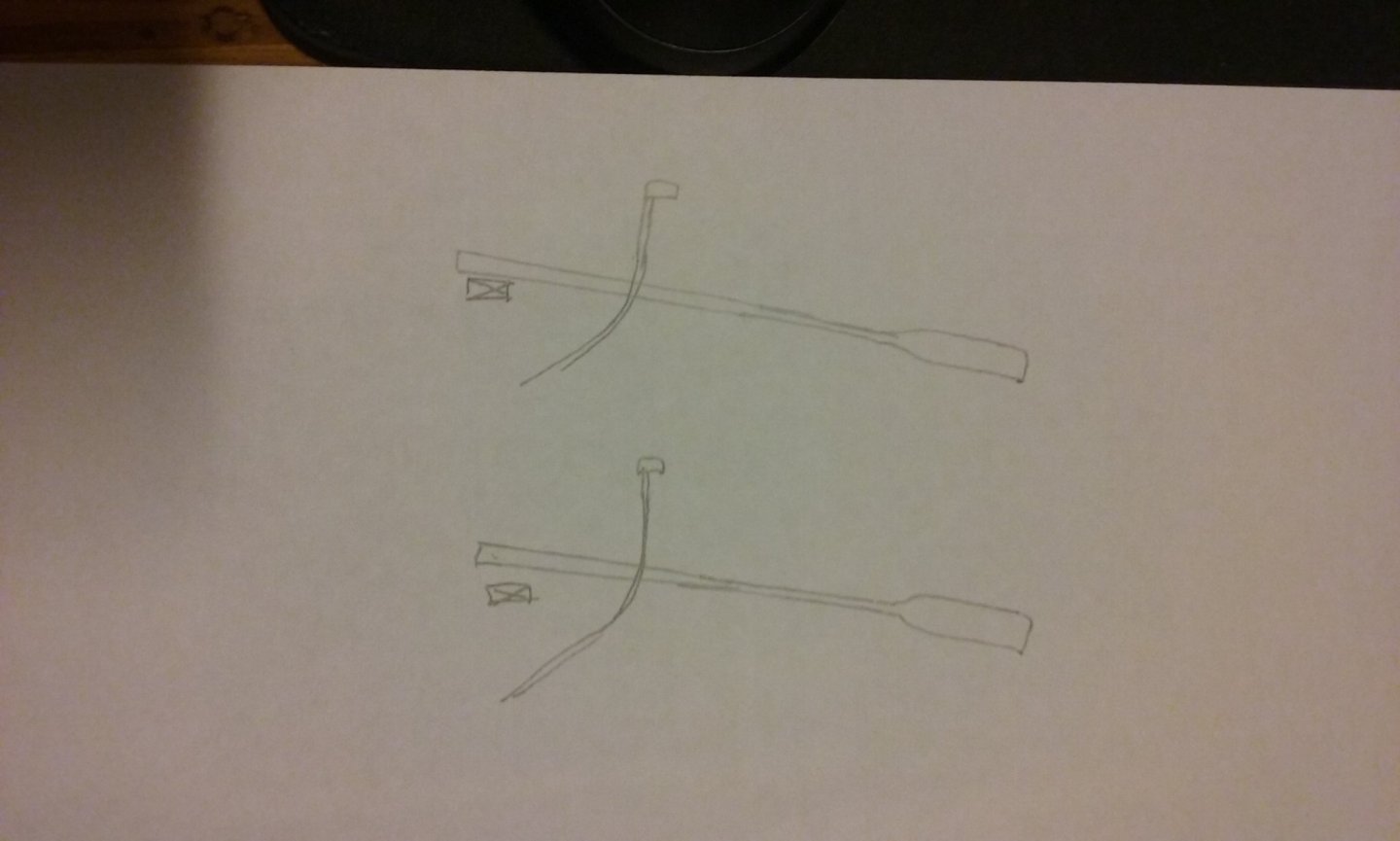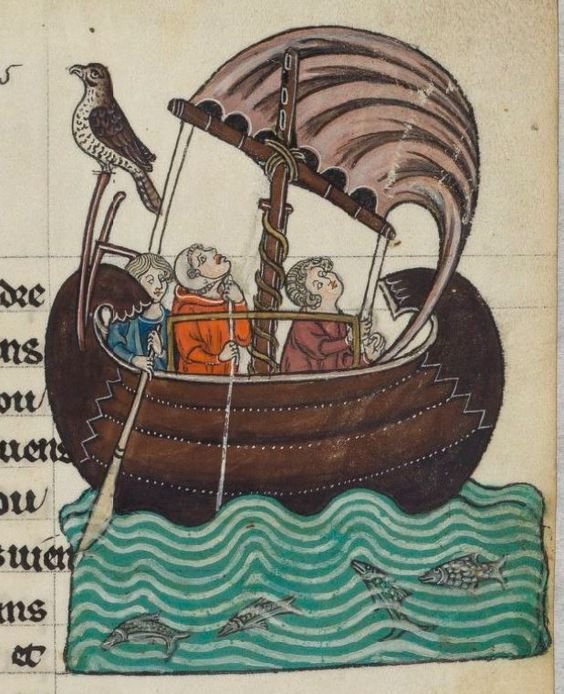-
Posts
7,986 -
Joined
-
Last visited
Content Type
Profiles
Forums
Gallery
Events
Everything posted by Louie da fly
-

HMCSS Victoria 1855 by BANYAN - 1:72
Louie da fly replied to BANYAN's topic in - Build logs for subjects built 1851 - 1900
I got to see HMCSS Victoria this weekend as a guest of the Ship Modelling Society of Victoria at the Geelong Wooden Boat Festival. She is very beautiful - better in real life than in the photos. Steven- 993 replies
-
- gun dispatch vessel
- victoria
-
(and 2 more)
Tagged with:
-
As I read this, the revenue boats crept up on the (smugglers with) the brandy . . . Steven
-
(Thinks: Aha! another steam-boat to sink!) Dangerous birds, those shags. You really have to watch out for them Steven
-
Beautiful work, Jan. Really impressive. I wonder why they had all the guns in the after half of the ship. It seems like a very strange decision. Perhaps to make better room for cargo in the fore half? Steven
-
Here are the shields at the current state of production. The two on the right-hand end were painted from memory and though they're similar to shield decoration common in Byzantium, they aren't based on any particular shield in the contemporary pictures. The rest in the top line are copied from shields in contemporary iconography. The two on the bottom line aren't quite finished yet - one shield formed and cut to shape, the other still in the mould. And here are the originals: Steven
-
I've always had trouble with this myself, until I had the epiphany that I could go to google translate, type in the word in the English section, and the French translation would supply the accents. Then copy and paste into the text of my MSW post (i.e papier maché) . It even works with the Greek alphabet! (I haven't tried it with Chinese). Steven
-
Mark, I don't think there's likely to be a problem. The film of butter is very thin (has to be to get accurate detail), then after removing the shield from the mould I smear PVA over the face of the shield (i.e. the only surface that is in contact with the butter) which should seal it in pretty much, then I paint over the whole outside face with enamel paint. If bugs can get through THAT, they're a better man than I, Gunga Din. Steven
-
Thanks for the likes and the comments. Mark, I started out with a "blank" (you know the original thing the mould is cast from -don't know the technical term) made of plasticiene (modeller's clay to those of you who led sheltered lives), then cast it in a little box filled with builder's bog (car filler) - brand name Plasti-bond. When it had set I coated the inside with something greasy so it wouldn't stick and cast the "male" part into it with more of the same stuff. I found you have to be careful to make sure you don't get little bubbles in the mould - though it can be repaired. Now I'm making the shields I find that smoothing with a finger is better than using the male half - it's more reliable and gets the detail better. I've always had a bit of a thing about the thickness of shields in model ships, having (in a previous life as a mediaeval re-enactor, prior to ship modelling) used a shield myself. Too thick and they get very heavy after a while - not a good thing when you're "fighting for your life". So I spent a lot of time and research trying to figure out how to make them really thin for the model. I tried wood, tinfoil pushed into the mould with a resin backing etc etc. The tissue/PVA technique seems to work best. Steven
-
I've finished the "tail" stringer. And started on the oarbenches on the port side (note the cunning weight I'm using to hold them down). Just a little outline of how I make the shields from facial tissue. I first smear the inside of the mould with something greasy (I've been using butter - it's cheap and easily available) so the paper doesn't get stuck to the mould. I use a square piece cut from the tissue a little larger than the shield so it overlaps the mould, then put in a blob of PVA glue, then another square of tissue, another blob of PVA, until there are four layers in there (note each tissue is usually "4-ply" i.e. 4 layers of very thin paper, so I end up with probably 16 layers in all). One final blob of PVA, then I push it all down with a fingertip and smooth it around the inside of the mould. The more glue I have on my finger the less likely the paper is to follow my fingertip when I remove it. Leave it for several hours till the glue is almost set, the push down again with a fingertip, pushing the paper/glue matrix into all the corners of the mould so it takes up as much detail as possible. Leave to dry and then lift it carefully from the mould, then cut around the outside to get rid of the excess. Smear another blob of PVA onto the face of the completed shield - I find this improves the surface and gets rid of some of the smaller faults. Sand smooth with fine paper. Repeat 49 times. I use matt enamel paint (Revell or Humbrol) - I find it gives better results than acrylic - and a very fine watercolour brush. Steven
-
Quite right. It did seem to be from the wrong era. Steven
- 332 replies
-
- fluit
- abel tasman
-
(and 1 more)
Tagged with:
-
A pleasure, Marcus. Here's another I found - a fluit by the French artist Diderot, dated 1779 (which I thought was a bit late for fluits to still be in operation) Steven
- 332 replies
-
- fluit
- abel tasman
-
(and 1 more)
Tagged with:
-
Beautiful work, Dick! A joy to behold. Steven
- 263 replies
-
- nave tonda
- round ship
-
(and 2 more)
Tagged with:
-
I don't know if these will be of any help, but I just came across them browsing the Net. This one's a black charcoal sketch in the British Museum, museum number 1836,0811.609 - no mention of artist or date, but obviously a fluit. The other is from a newspaper item about a 17th century shipwreck find - https://www.dailymail.co.uk/news/article-3547510/Rags-bottom-North-Sea-belonged-member-Charles-s-household.html - unrelated to the picture itself, but at the top of the picture it says where it comes from. It might contain some details of value? Steven
- 332 replies
-
- fluit
- abel tasman
-
(and 1 more)
Tagged with:
-
Never heard this one - I love it! English is so full of irregular words that don't follow the rules you'd expect them to. I'd hate to have to learn it as a second language. And if we say "I write, I wrote, I have written" - shouldn't we say "I bite, I bote, I have bitten"? And we have "one horse, two horses" and "one duck, two ducks" but "goose" becomes "geese" and the plural of "sheep" and "fish" is "sheep" and "fish" But even among native English speakers there are regional variations. It still pulls me up sharply to see someone from the US (I don't know if this applies to Canada as well) write "If I would have thought ahead I would have done a better job" - where I come from it's "If I had thought ahead I would have done a better job". English is such a mish-mash of other languages it's full of confusion and special cases. Digression welcome! Steven
-
Thanks everybody for all the likes. I've added all the benches for the starboard side and lined up the slots for the benches in the port stringer and glued it on Here are the benches for the port side ready for gluing into place. And I've scarphed on the "tail" extensions for the stringers. Once the glue is dry I'll start curving them to fit the curve of the tail. Quiet awhile ago I did a lot of experimenting on how best to make the shields for the pavesade - the row of shields along the side of the ship to protect the upper oarsmen, bearing in mind that real shields were pretty darned thin (usually between 7 and 10mm = about quarter to half an inch), which scales at 1/7 to 1/5 of a millimeter (= about 6 to 10 thousandths of an inch if my maths is correct) Turns out tissues (as in blowing your nose!) are the best material for this job. I made a mould out of builder's bog, put in layers of tissue glued together with (quite a lot of) PVA (white) glue and squoze (is that a word?) the resultant paper/glue gunge between the male and female halves of the mould. Once dry I had to trim each shield to shape, then sand to get a reasonably smooth surface for painting. I've done about 5 so far - another 45 or so to go. I've put a lot of research into the shield "devices" (decoration) used by the Byzantines, and once I've made the rest of the shields I'll be able to paint them with accurate designs, though I'm mixing and matching the colours to a certain extent (within the colour palette I know the Byzantines to have used). Steven
-
Hmm, dunno. I hadn't thought about it, but certainly a nice rectangular hole like that doesn't seem suited to a round bit of rope. Next step in construction: One of the Yenikapi galley finds had slots in the wale to take the ends of the oarbenches. In line with that I'd made similar slots for the upper oarsmen's benches, but as I'd already discovered the upper wale was too low for them I added a stringer on top of it to take the slots. While making the oarsmen it was necessary to get the correct relationship between the gunwale (the pivot point of the oars) and the water level (where the oarblades reach to) and the level of the oarsmen's hands; they all have to be in a straight line. Unfortunately, I discovered that even with the new stringer the slots were too low, so either the oarblades would be too low or the oars wouldn't sit on the gunwale or the oarsman's hands would be too high. And anyway as it was the benches would be only about 200mm (10") above the deck - Though an oarbench doesn't need to be as high as a normal chair - and in fact shouldn't be, because it makes the centre of gravity too high - they shouldn't be that low. So I had to raise the notches so the benches would be higher. I decided to add yet another stringer on top of the first one, smoothed off to look like it's part of it, with new slots to get the benches high enough up for the oarsmen to sit properly. Here's the starboard one under way. I just carved the slots in the underside of the stringer, as the lower stringer would act as the underside of the slot (the photo below shows the stringer from underneath - the diagonal beams are the oars). Here is the port side stringer with one end glued in place, ready to bend round on top of the lower stringer. And the first two starboard benches in place with an oarsman sitting on one. 'E looks 'armless . . . (I'm still working on the exact configuration of the oarsmen's arms to get everything to line up). After I'd added the starboard stringer I found that some of the slots didn't line up with the ones below them, and I was in the process of ungluing the rotten thing and starting again, when I realised the two slots nearest the bow actually did line up, and the ones on the new stringer were actually better located than the lower ones. So I left it. Then I had the problem of what to do with the lower slots. Fill them up so they couldn't be seen? But as it turns out the oarbenches conceal the lower slots so I don't really have to do anything to them at all. My next step is to get all the starboard benches in place, then I can draw lines across the breadth of the ship at each bench to make sure the port benches line up with the starboard ones - something I hadn't thought of when I started putting the benches in place last time. Steven
-
Returning for a moment to the discussion of using an anchor chain to weigh down the head of the anchor so it would "bite" better, I'd forgotten I had this: It's from the Proceedings of the First Symposium on the Marmaray-Metro (Istanbul) excavations May 2008. Obviously from this the Byzantines were awake to the problem, but had their own solution to it - lead weights inserted into the anchor stock! Steven
-
Hmm, you're right. Even the best rowers show a certain amount of variation. Look at 3.57 and 11.00 at On close inspection, I do see a certain amount of variation; even a suggestion of the occasional crab being caught. 8.19 doesn't count - they're just getting back into their stroke after not rowing on one side, to allow the ship to turn. (I wonder how tightly she could turn if one side backwatered!) Thanks everybody for all the likes and the encouraging comments. Steven
-
I glued all the oars into place. Looked good. A lovely line of oars, all at the same angle, with the blades all at the same height. I'd had a cunning plan, as seen in the top diagram below. Each oar was to be glued as it passed through the oarport and the inner end glued to a beam running the length of the ship, making it all very secure. But I'd made a mistake. I don't quite know how I came to do it. The first indication was when Pat (Banyan) asked me something on the lines of how I was going to make sure the oars were going to be kept in place when the ship was transported. I thought "no worries - I have already developed a cunning plan to deal with that". Unfortunately for reasons I don't recall (something to do with the angle of the bow-most oar) I only glued the oars at the oarport and not at the beam (as in the lower diagram), thinking "she'll be right" (Australian term for "I can't be fussed doing it properly - but what could possibly go wrong?"). Then AAARRRGGGHHH! The oars started to droop, and many of them were easy to push out of alignment. After considerable angst (in which I considered pulling off all the decking above the oars, replacing the oars and re-gluing the decking, which I'm sure would have turned it into a dog's breakfast) I decided the best thing to do was to pull each oar out of the hull and re-glue it to the inner beam the way I'd originally planned. Very labour intensive. Here it is with only a few oars re-done (note the base of a carved figure being used to push the oarblade up as far as it will go, to push the inner end down against the beam). I made sure that looking from directly above, the oars are all at the same horizontal angle (the one exception is an oar I haven't yet fixed). I've just finished doing them all, and for some reason despite the internal beam being nicely aligned, several of the oars are now a little too high or too low compared with the rest. Well, I've decided I just have to suck it up - the glue has set belowdecks and there's nothing I can do about it. And you do have to look pretty carefully to see it - as usual, the photos exaggerate the fault. And the alternative would have been much worse. Sigh. Steven
-
Ekis, I wasn't sure when the castle was due to be finished - I was quoting from memory. I agree - the castle itself is very modest- it doesn't even have a drawbridge - but it is nonetheless something that would have existed at the time - built by a minor lord on a limited budget. They also explain on the website what the revenues of a castle in such a place would have been and where they would have come from. My wife and I would dearly love to go to Guédelon some time in the future and work for a week or so as volunteer labourers (they actually let you do that!). Unfortunately it's almost impossible to get there unless you drive your own car (we've looked up the transport options) and we live in a country where cars drive on the left side of the road - not sure I'd be happy driving on the other side! Steven
-
Beautiful work, Ekis. Judging by the architectural style, I'd place this in the Mediterranean region - southern France or Spain or perhaps Italy, and time-wise in the 14th century (mainly because of the form of the turrets and a few other military innovations that happened about then), though the church is Romanesque - presumably it was built centuries before and the fortifications either added later or updated as the centuries went past. If, later on you do build a little harbour, the ship(s) should also be from the 14th century. Though the picture below is from the 13th century a lot of smaller Mediterranean ships didn't change much over time, looking (allowing for artistic license) pretty much like this : By the way, for a bit of inspiration, have you seen the full size castle they're building at Guédelon using only mediaeval techniques at https://www.guedelon.fr/fr/. They've been building now for something like 20 years and don't expect to be finished for another decade or two. Steven
-
That's looking good, Peter. Nice and crisp. As I've already been in touch privately about your dad I won't add anything here, but our best wishes to you and Bernie. Steven
About us
Modelshipworld - Advancing Ship Modeling through Research
SSL Secured
Your security is important for us so this Website is SSL-Secured
NRG Mailing Address
Nautical Research Guild
237 South Lincoln Street
Westmont IL, 60559-1917
Model Ship World ® and the MSW logo are Registered Trademarks, and belong to the Nautical Research Guild (United States Patent and Trademark Office: No. 6,929,264 & No. 6,929,274, registered Dec. 20, 2022)
Helpful Links
About the NRG
If you enjoy building ship models that are historically accurate as well as beautiful, then The Nautical Research Guild (NRG) is just right for you.
The Guild is a non-profit educational organization whose mission is to “Advance Ship Modeling Through Research”. We provide support to our members in their efforts to raise the quality of their model ships.
The Nautical Research Guild has published our world-renowned quarterly magazine, The Nautical Research Journal, since 1955. The pages of the Journal are full of articles by accomplished ship modelers who show you how they create those exquisite details on their models, and by maritime historians who show you the correct details to build. The Journal is available in both print and digital editions. Go to the NRG web site (www.thenrg.org) to download a complimentary digital copy of the Journal. The NRG also publishes plan sets, books and compilations of back issues of the Journal and the former Ships in Scale and Model Ship Builder magazines.




